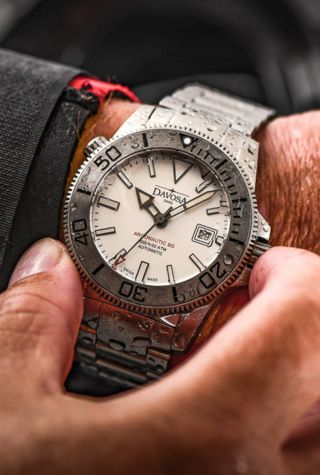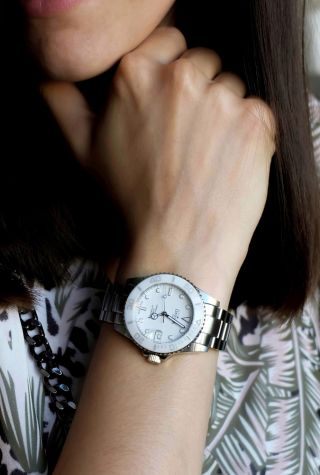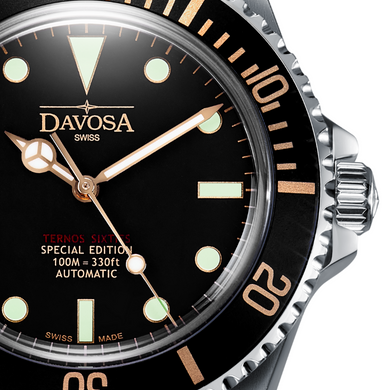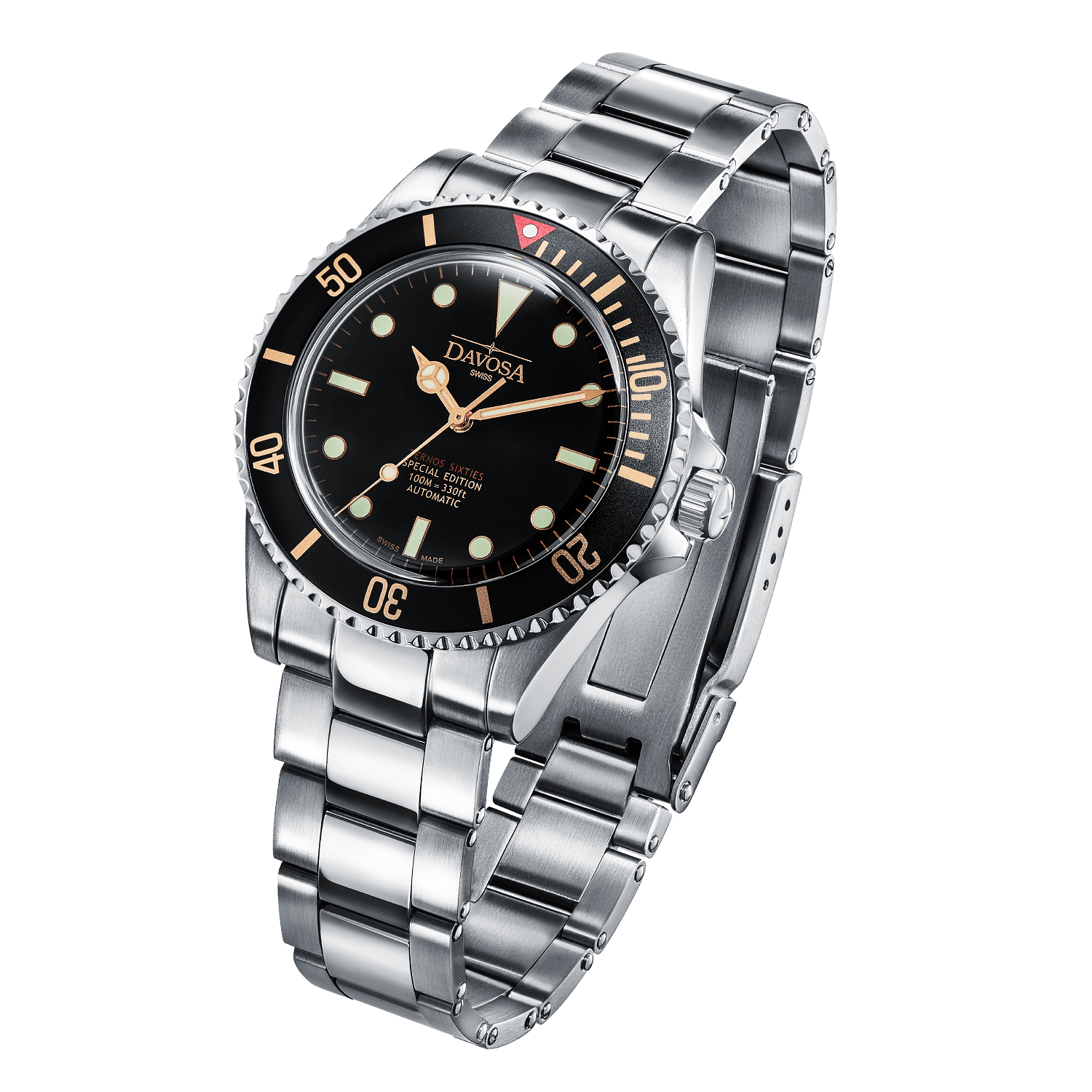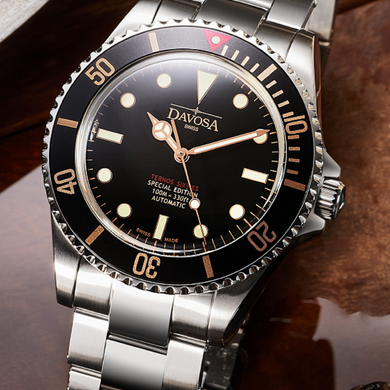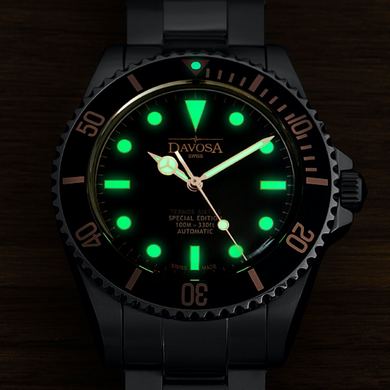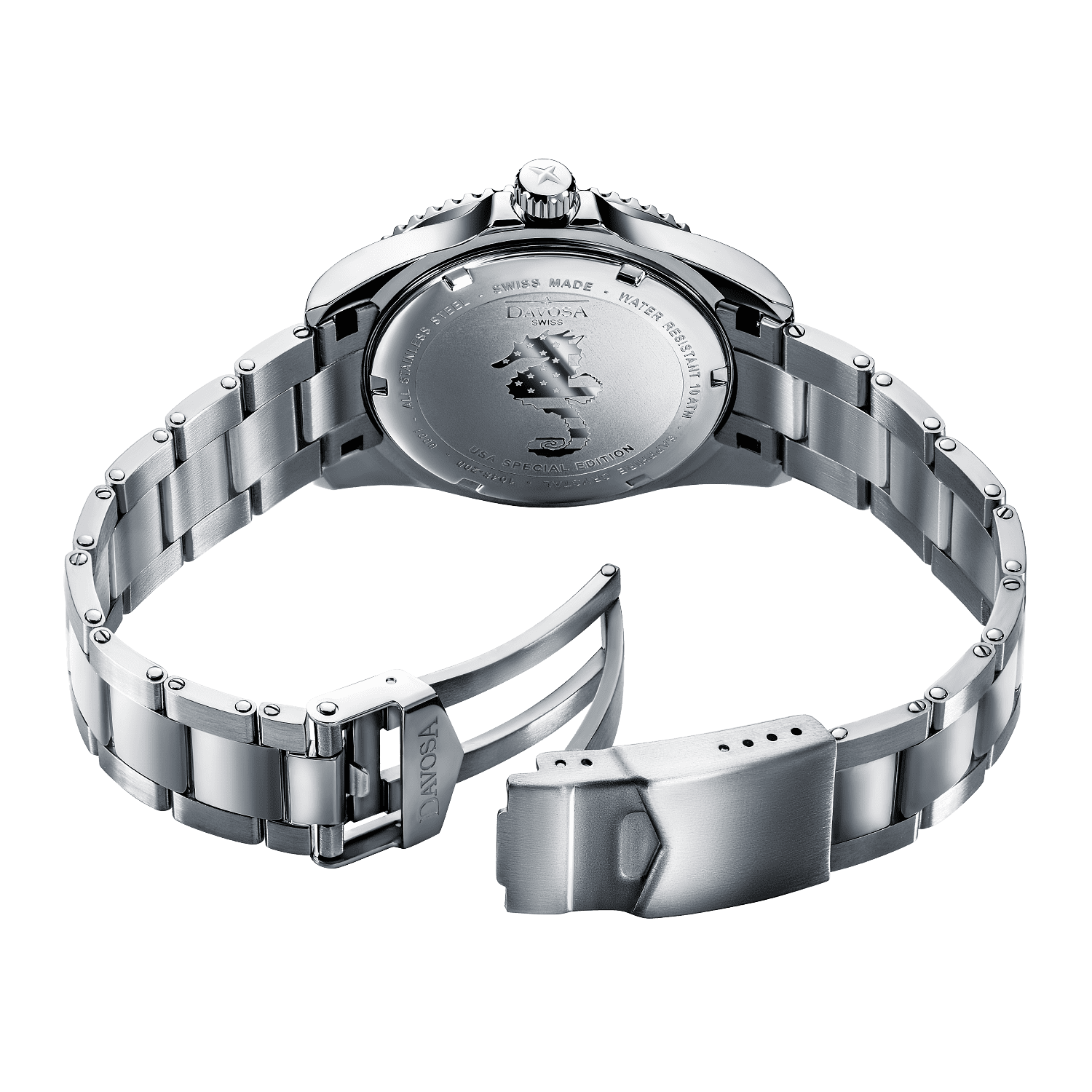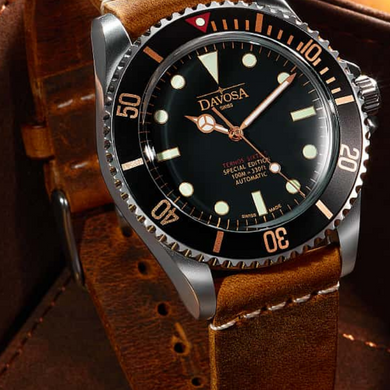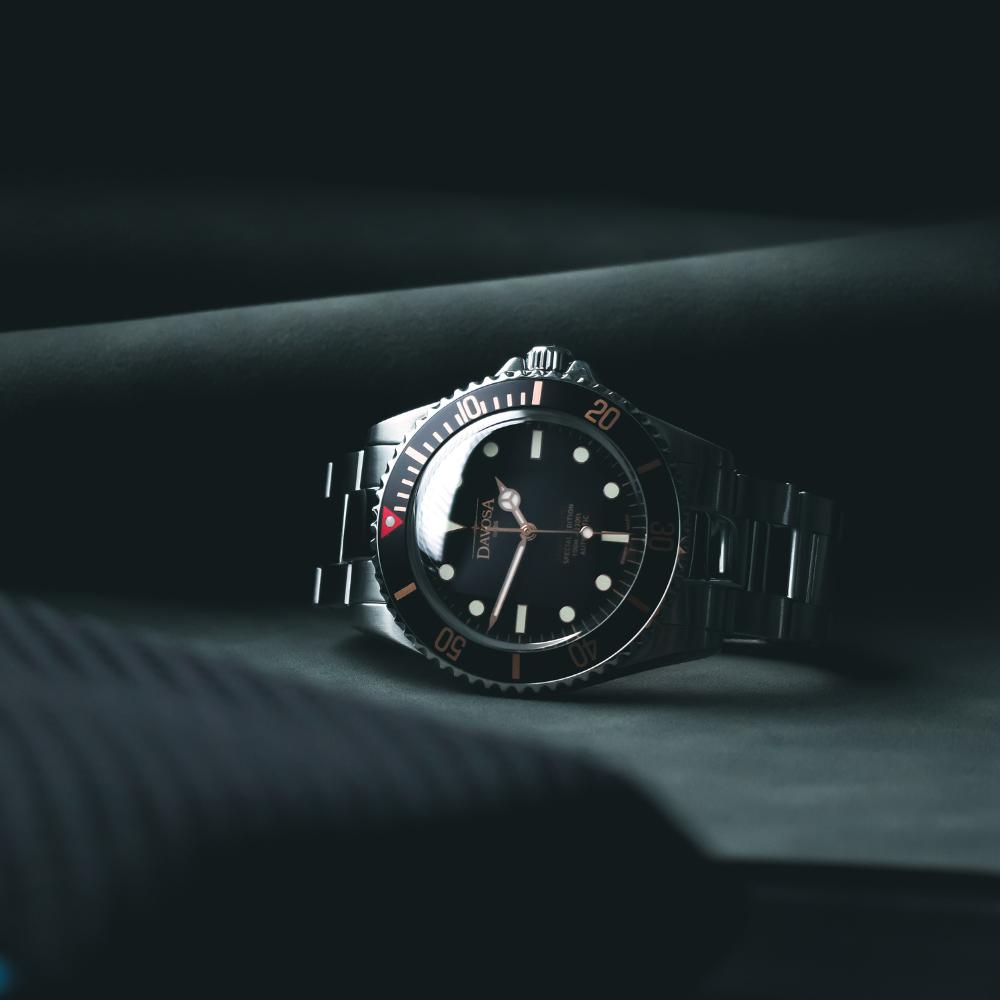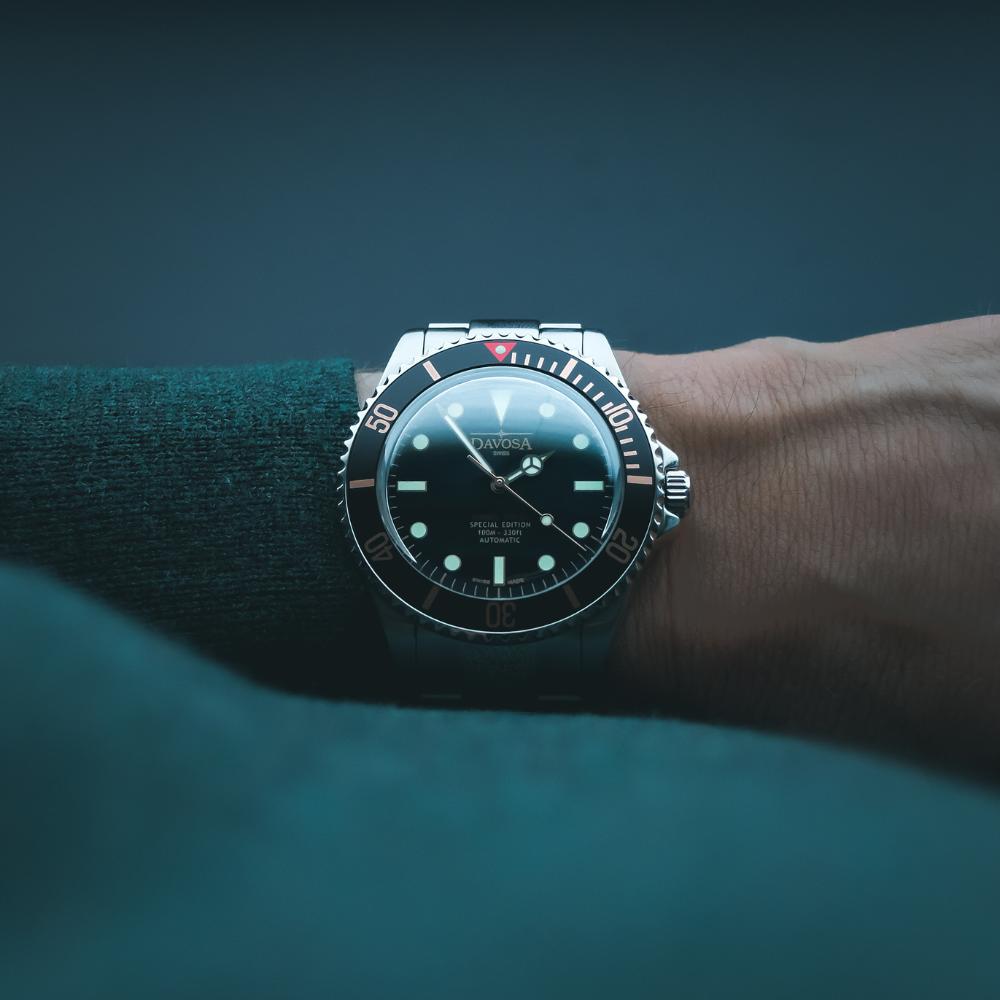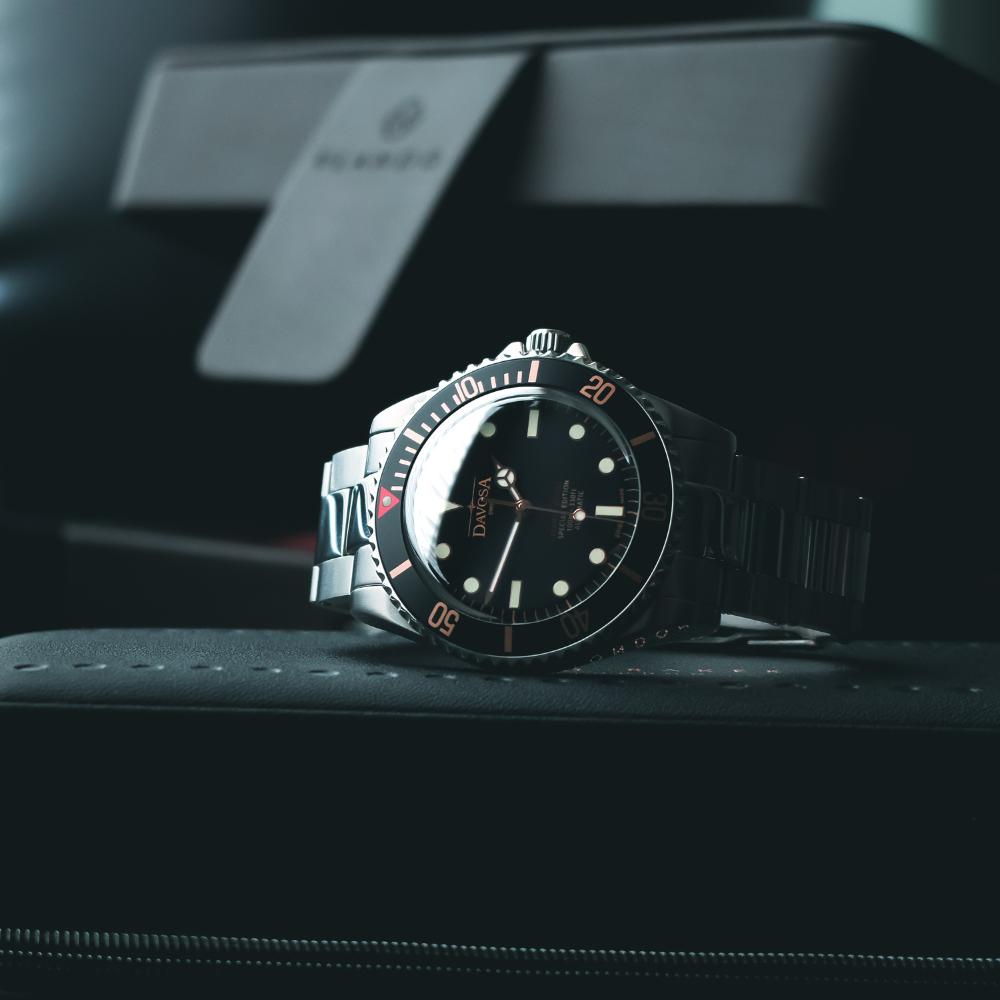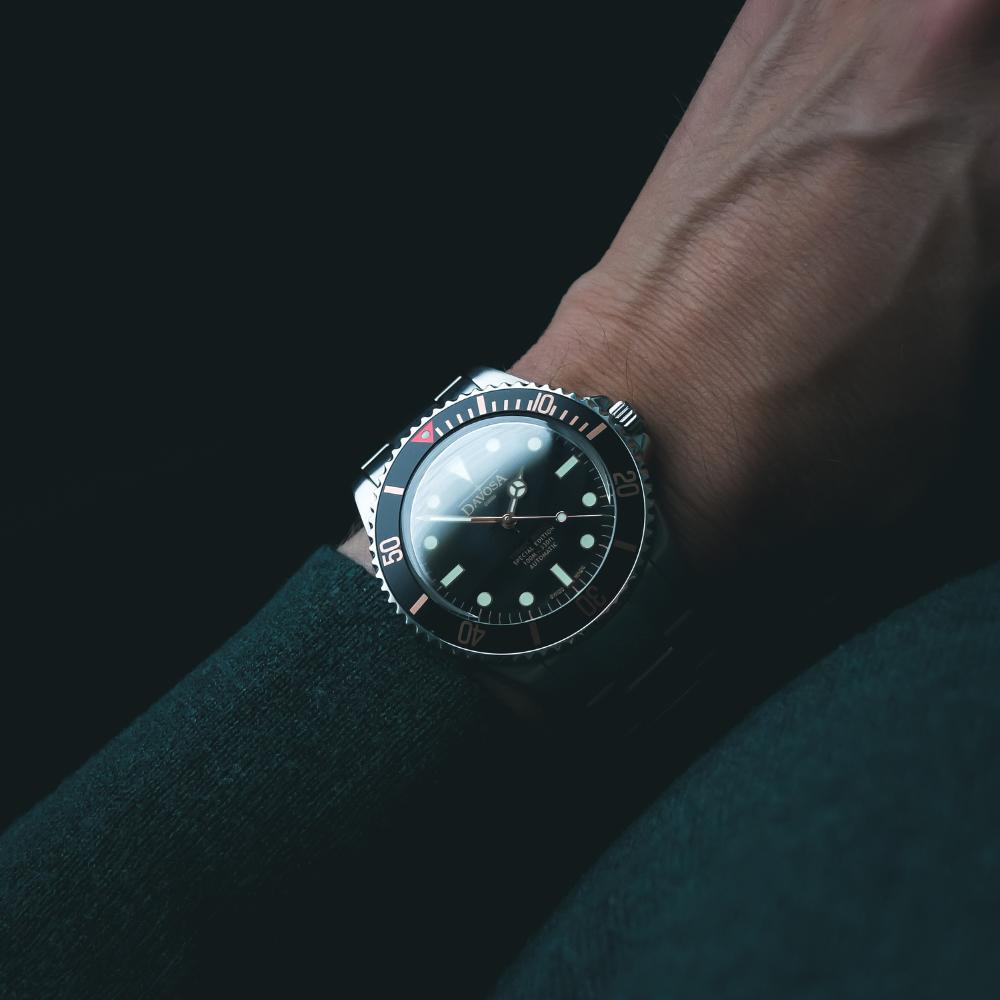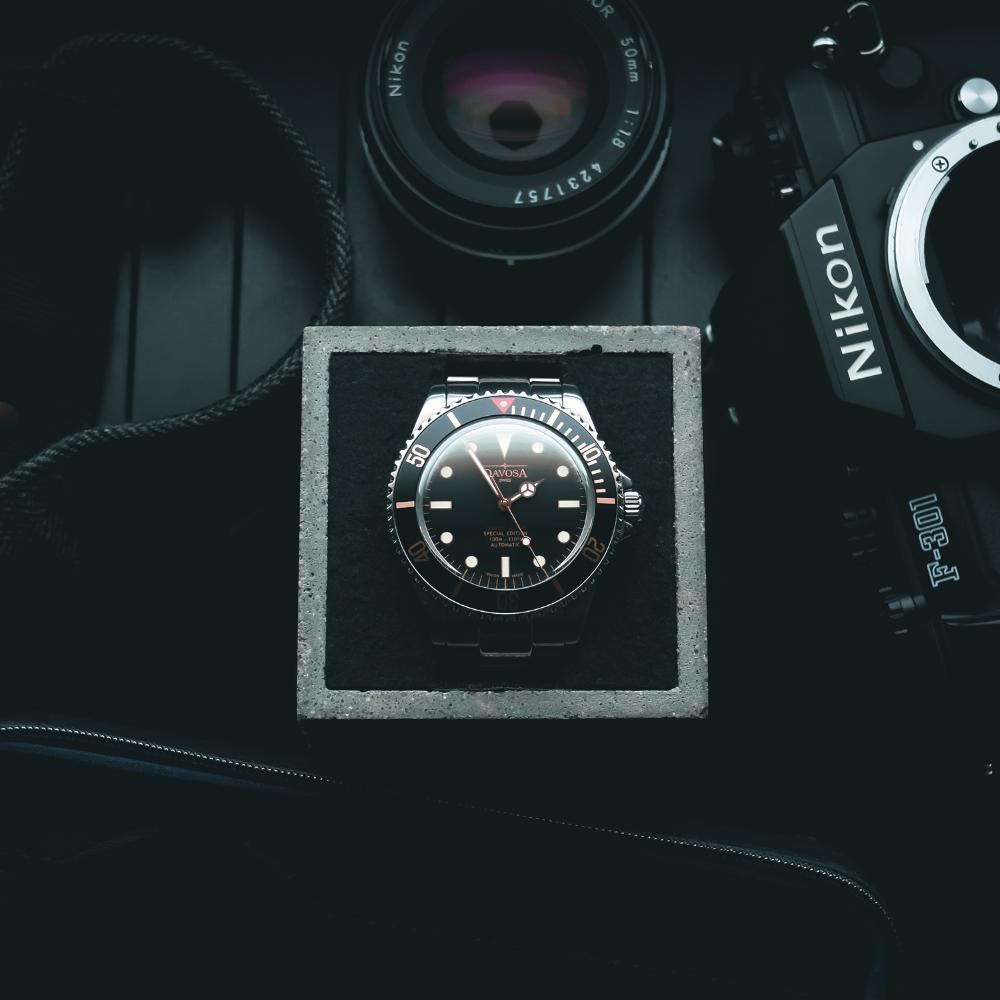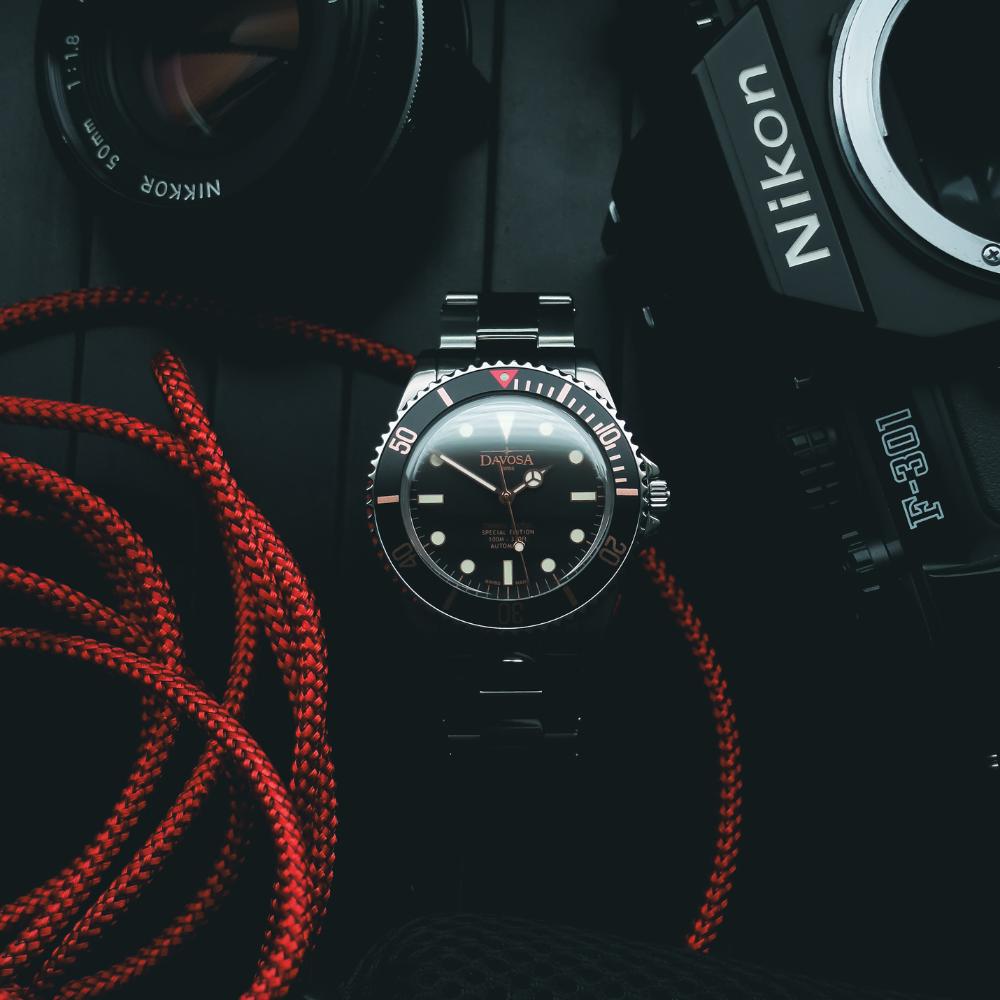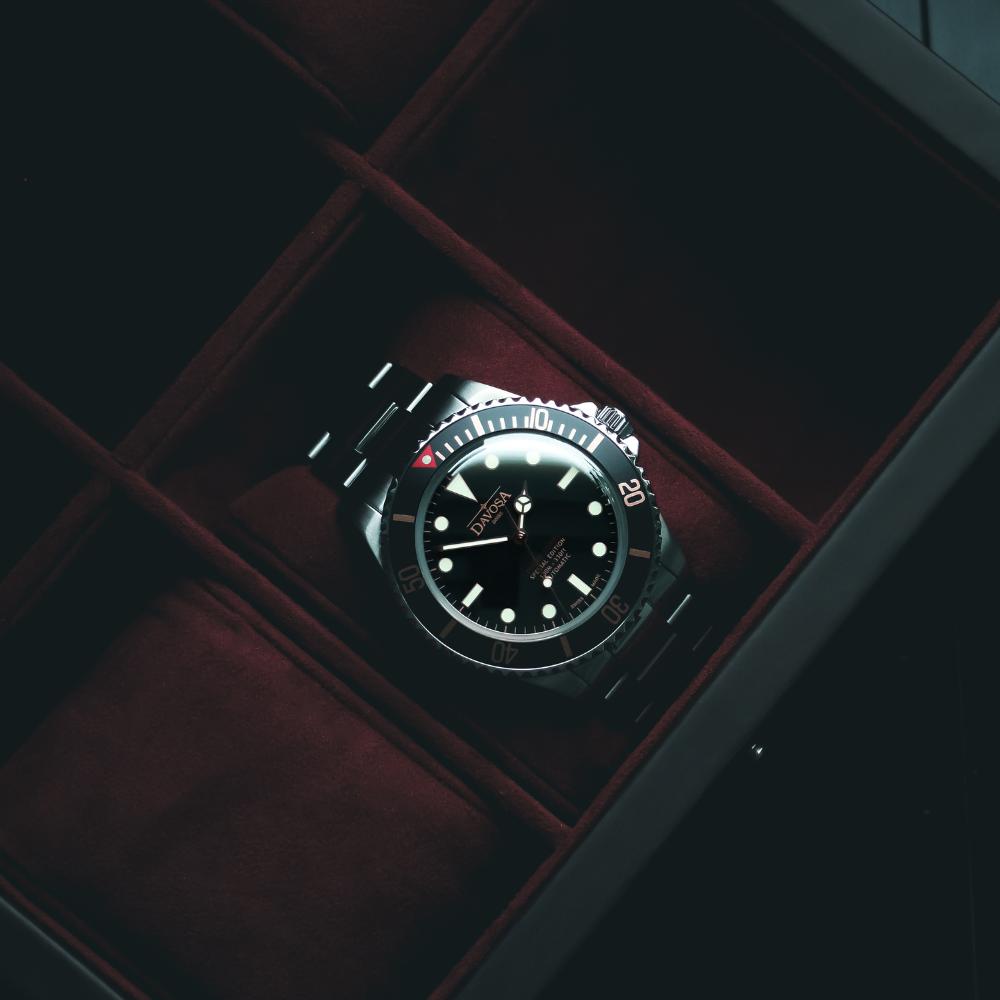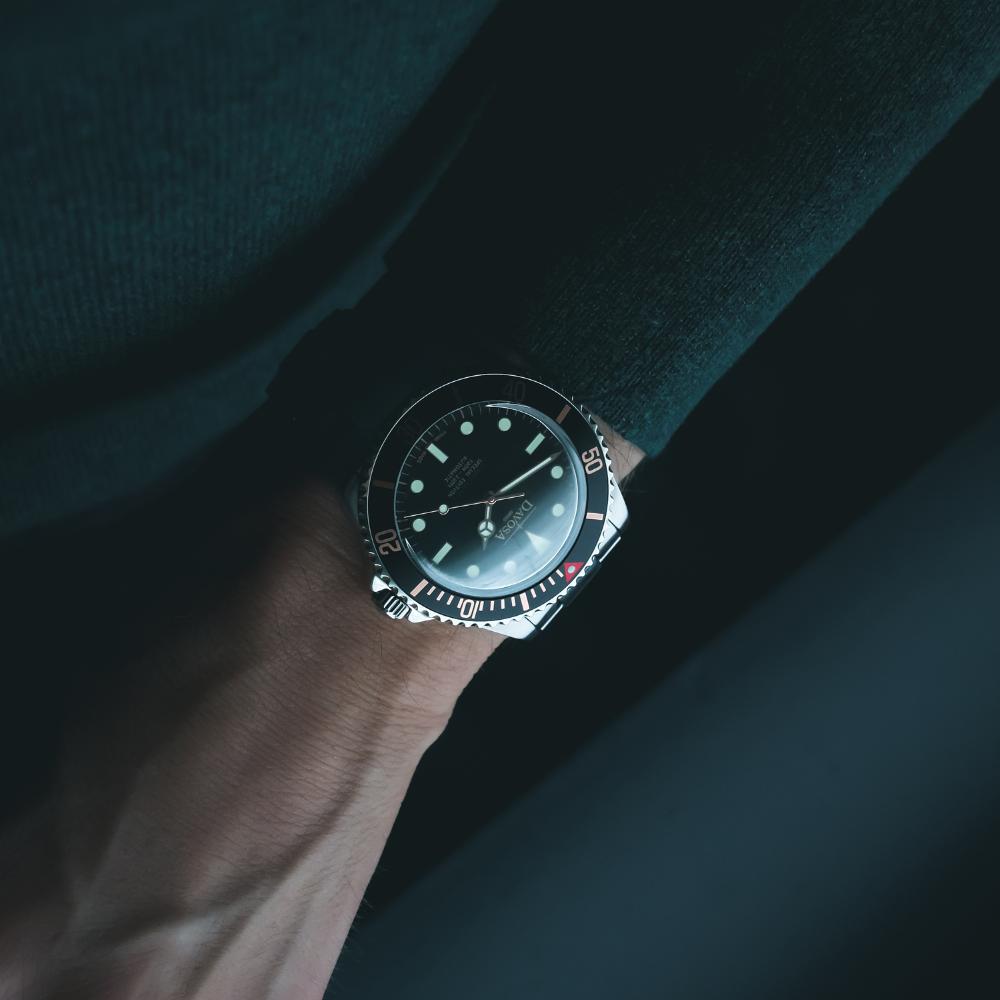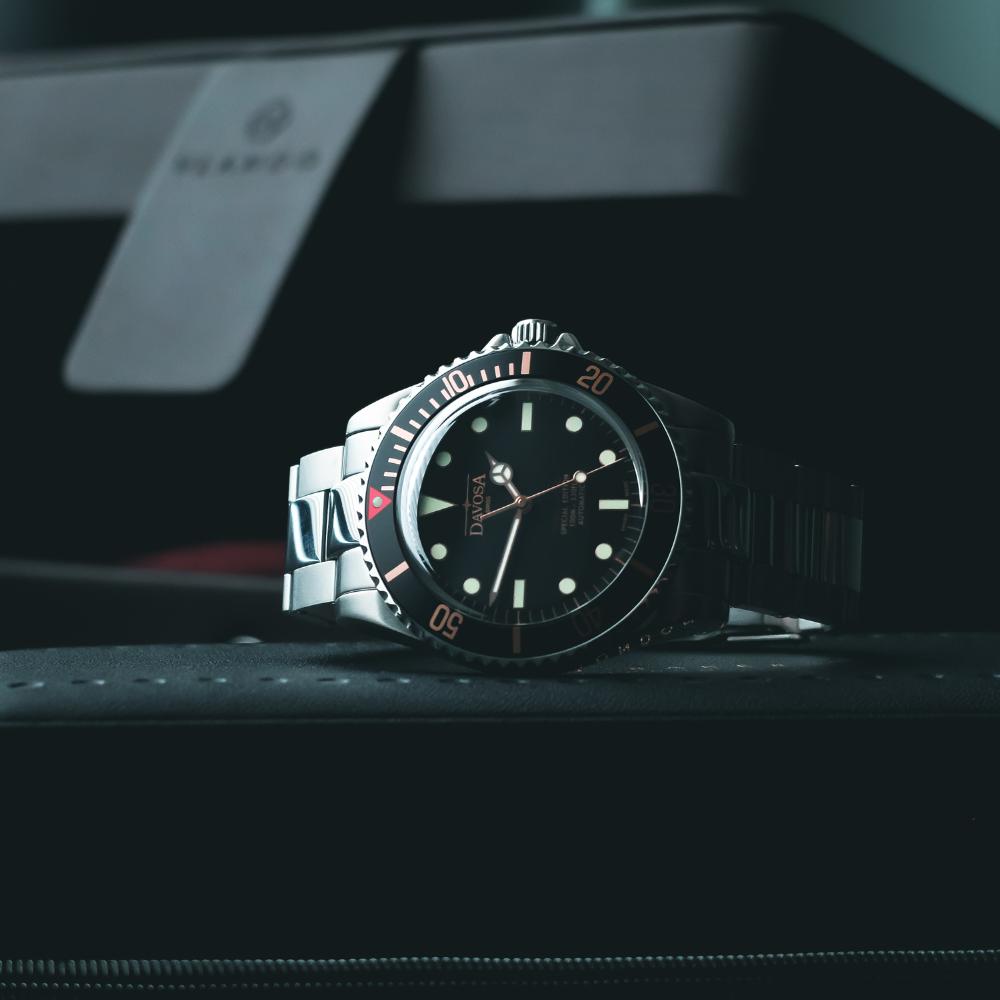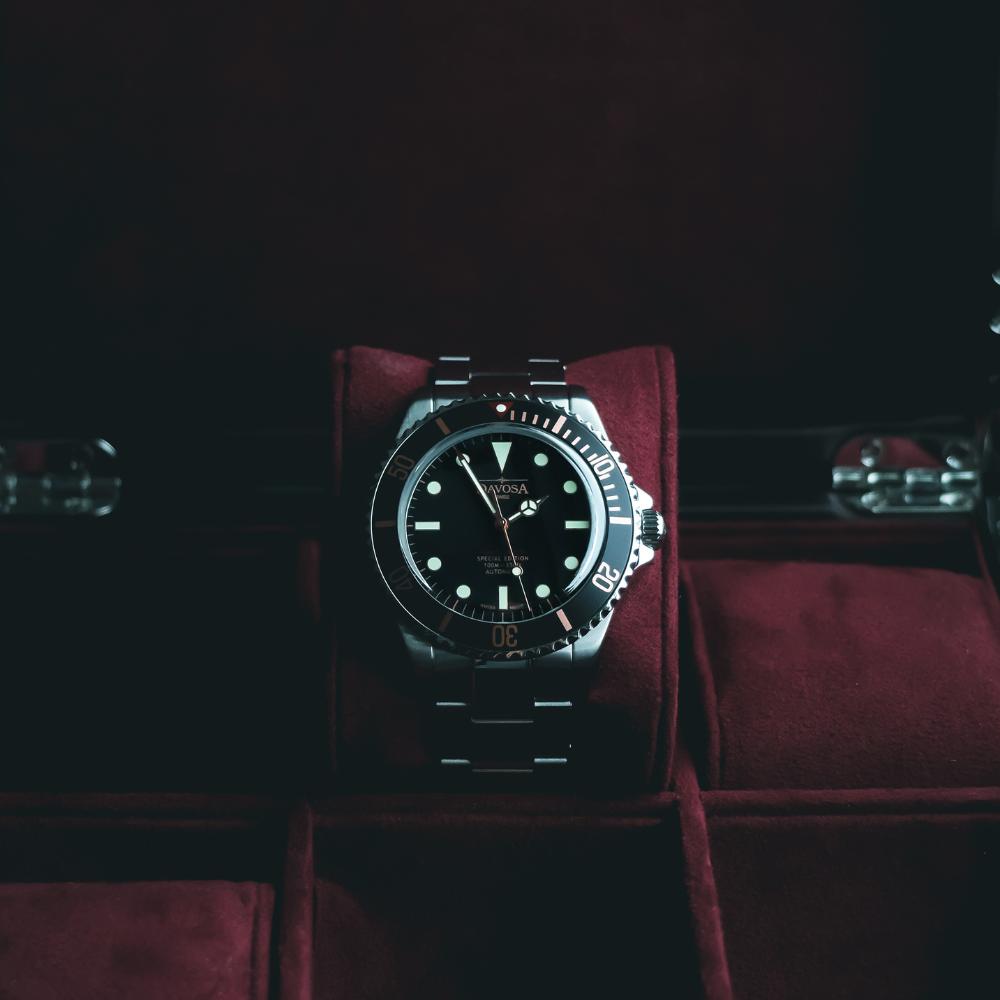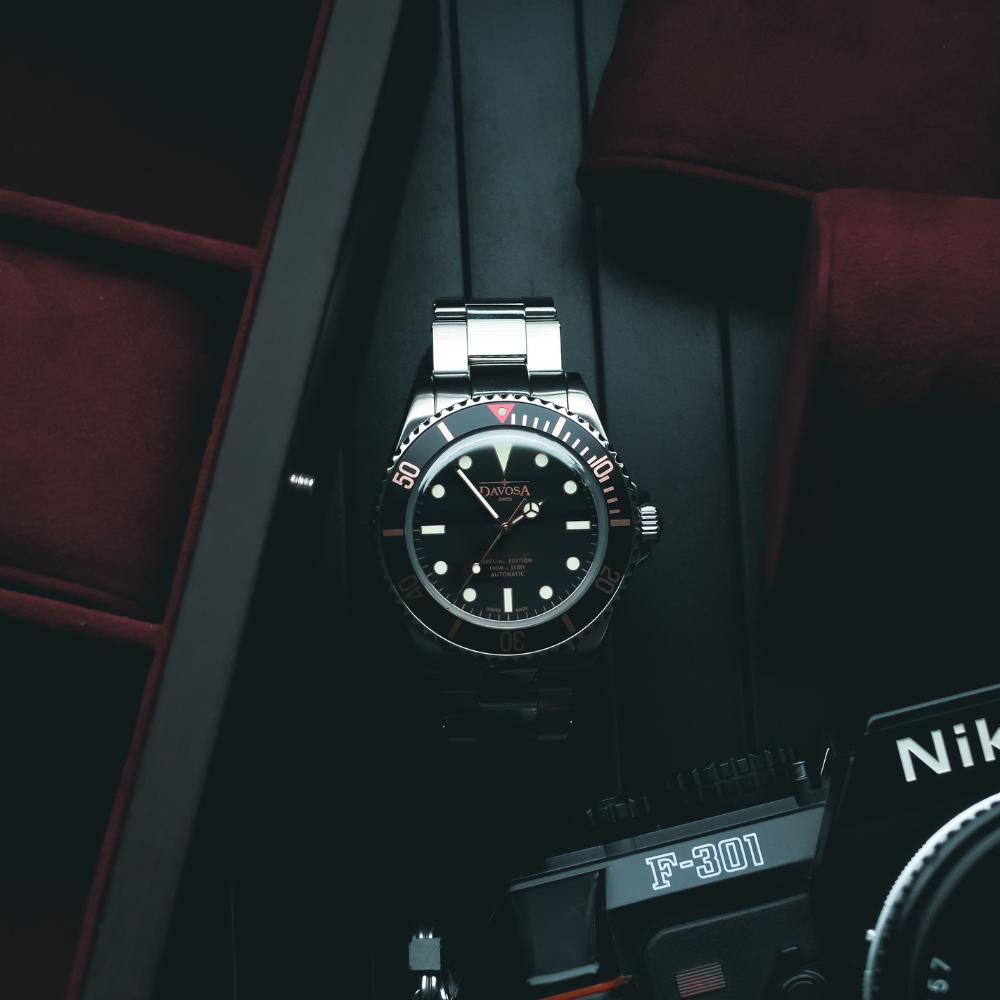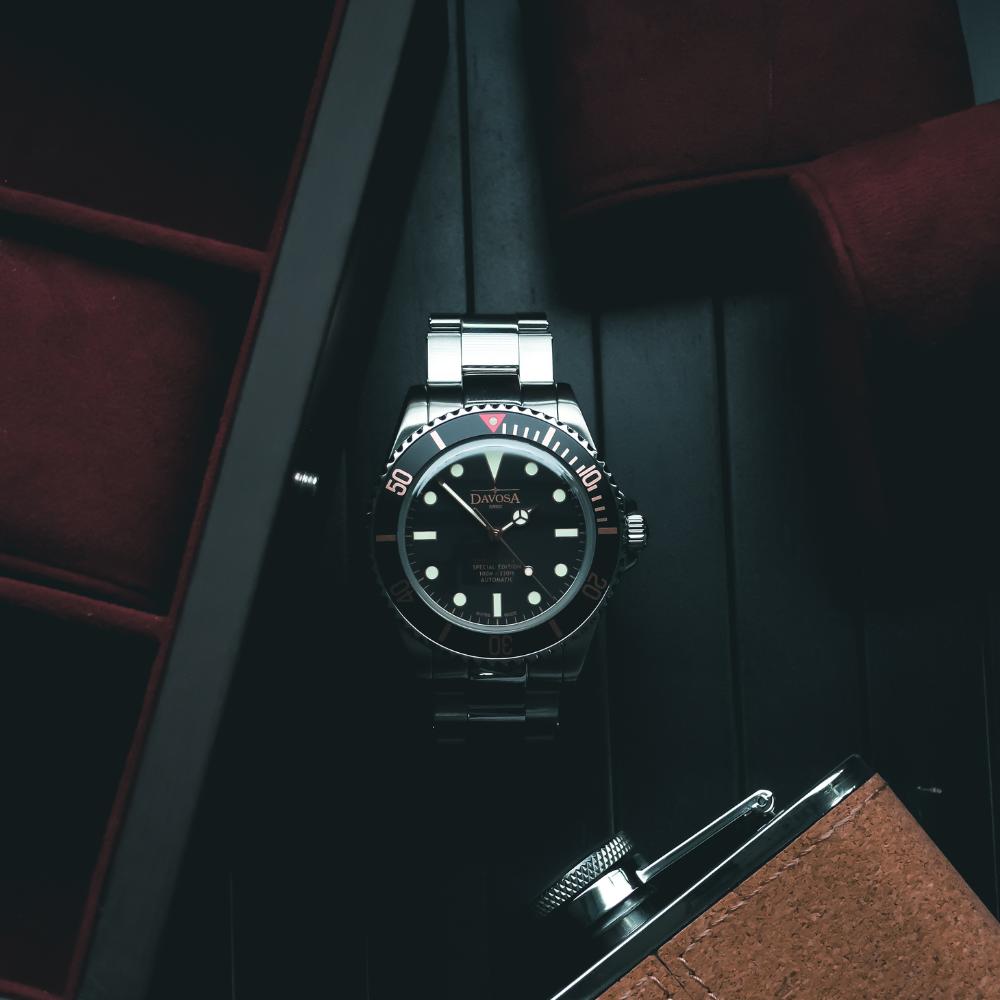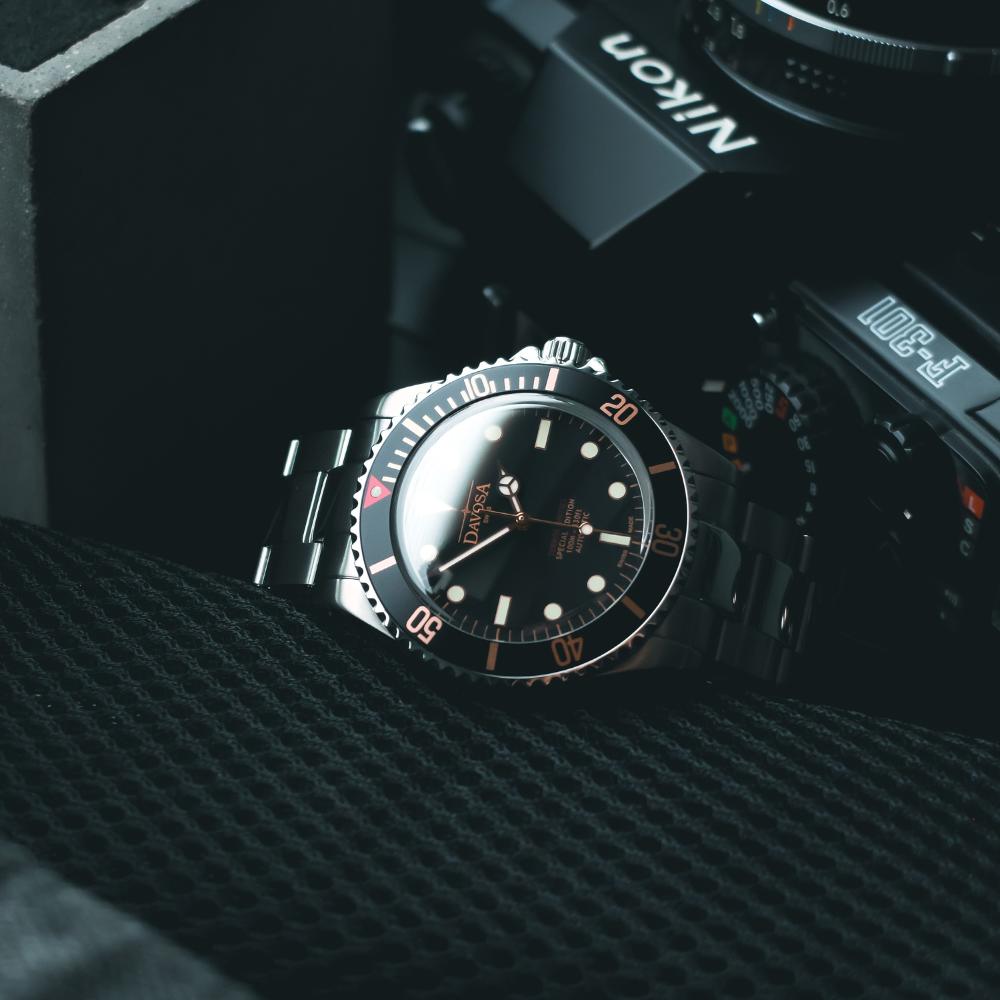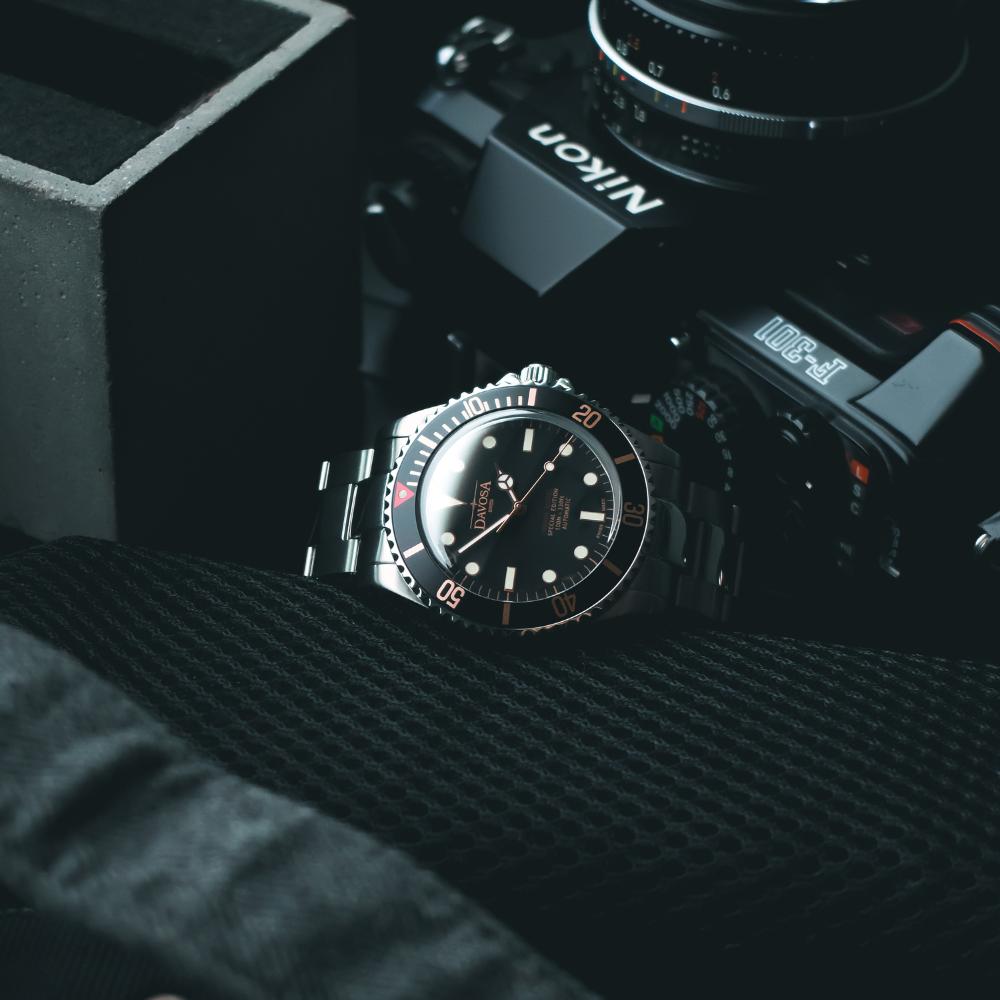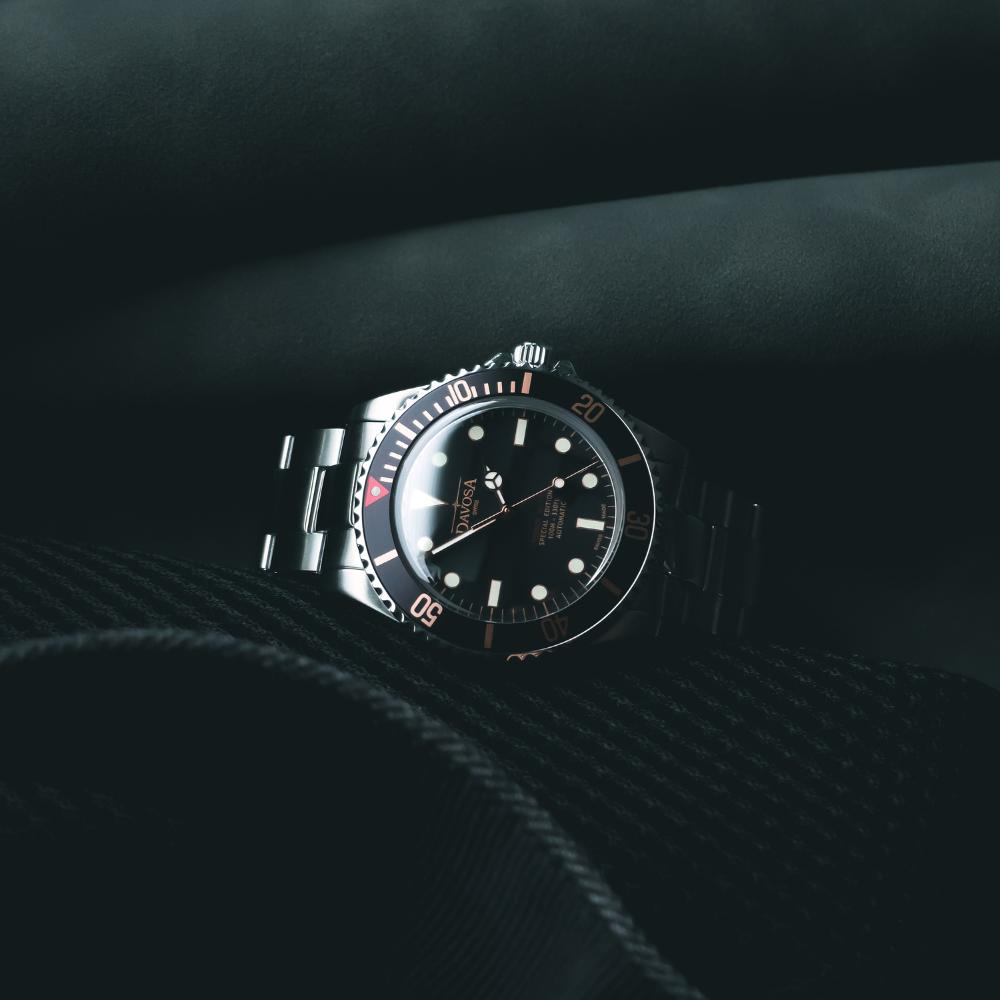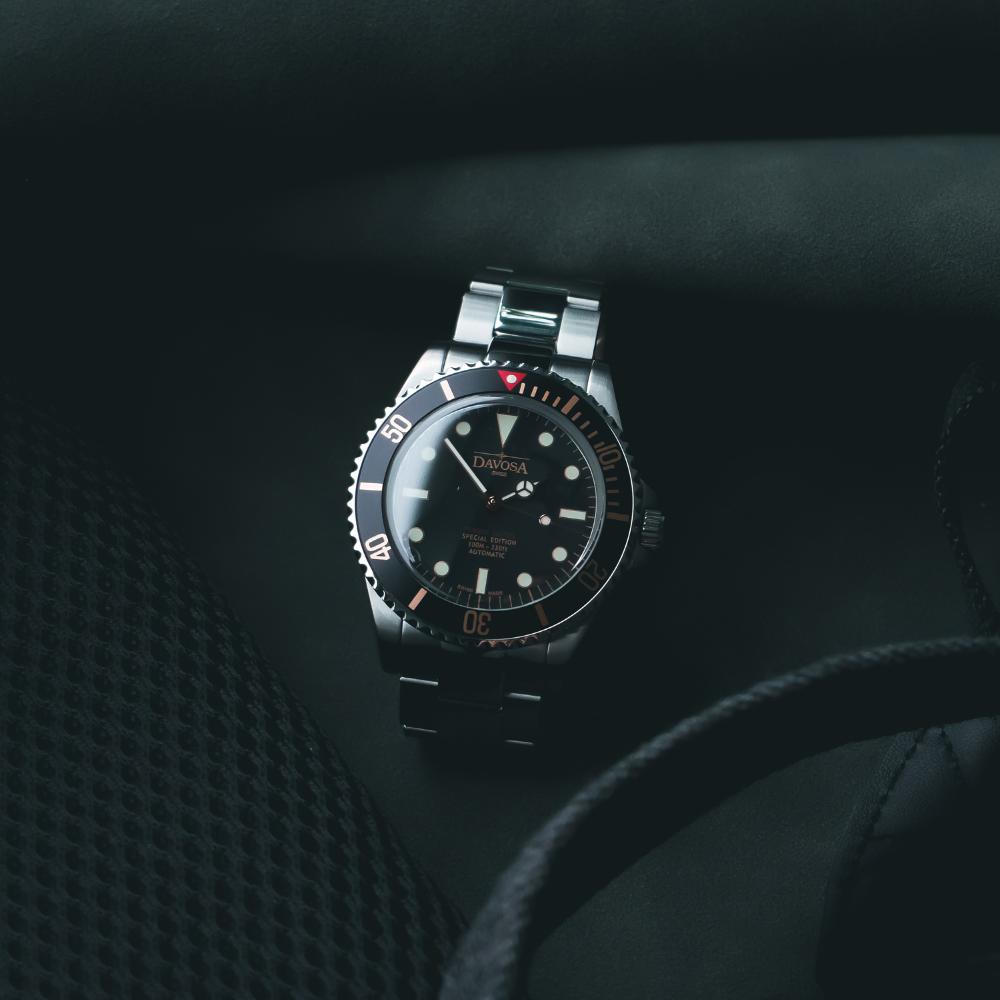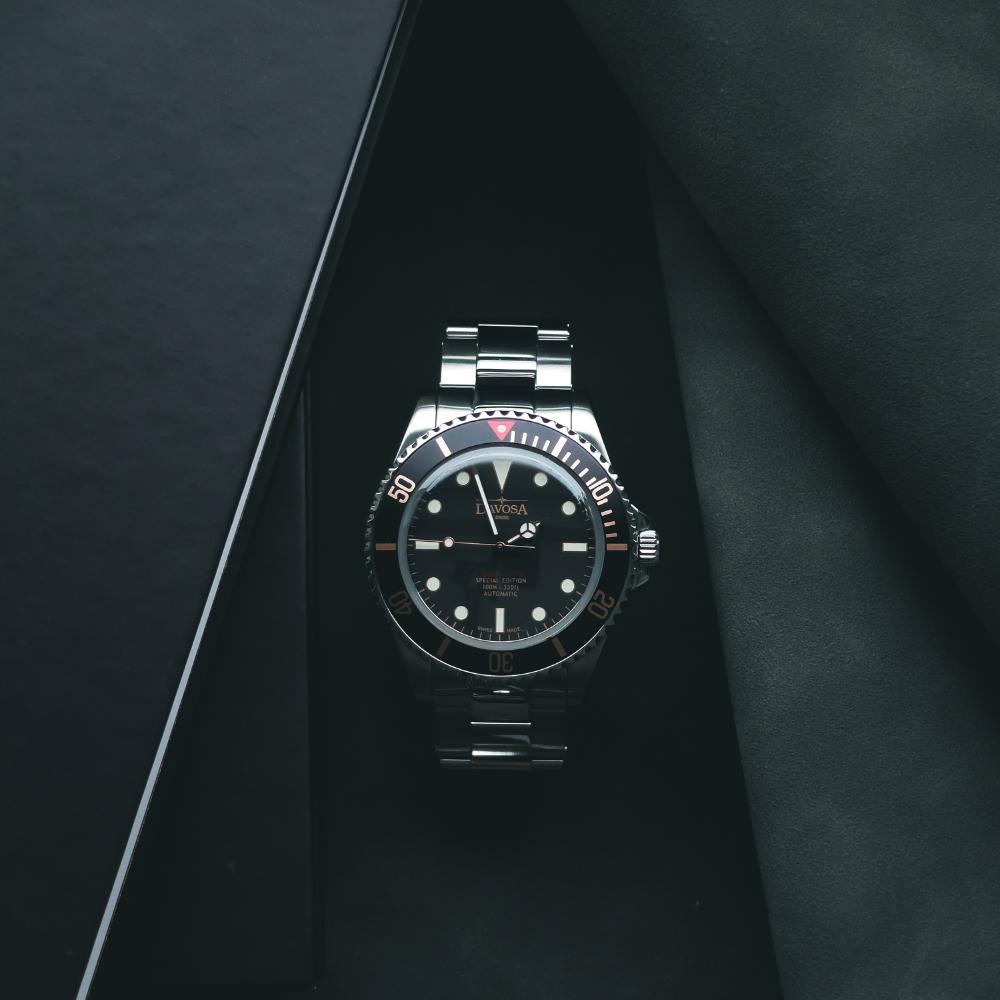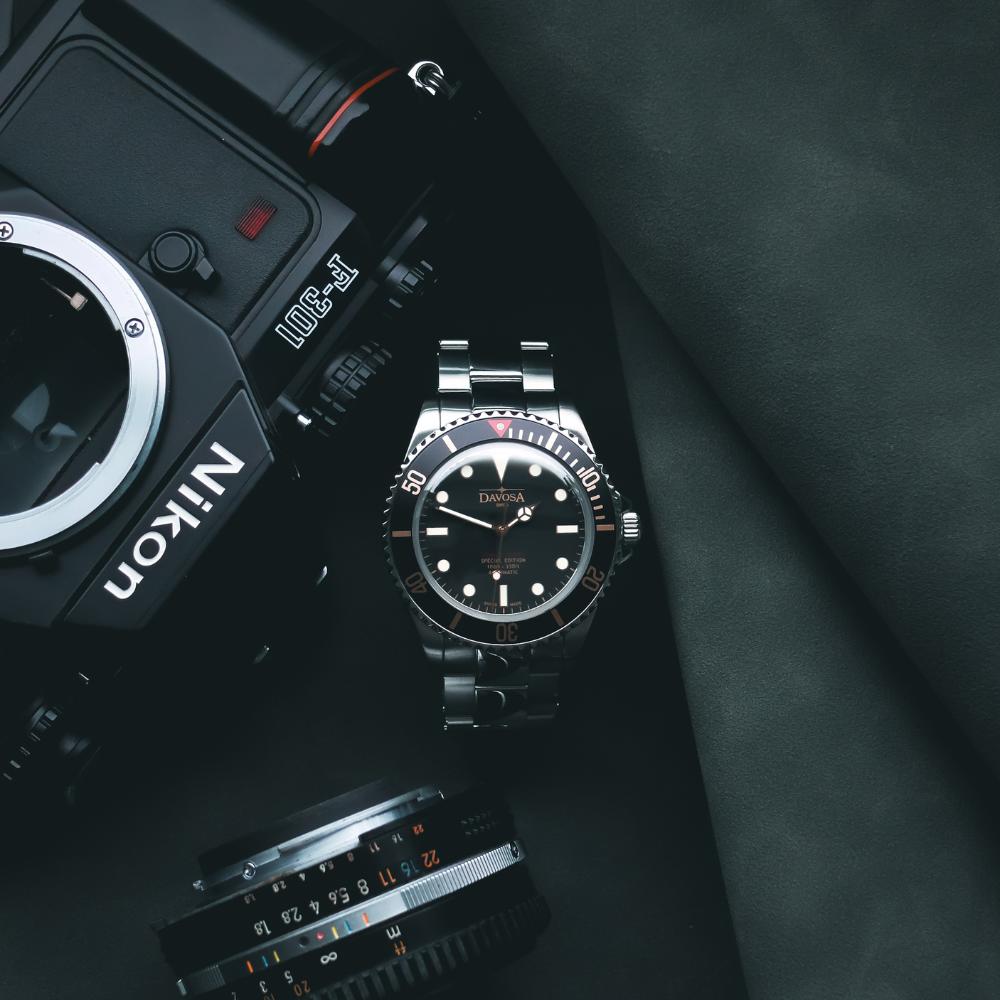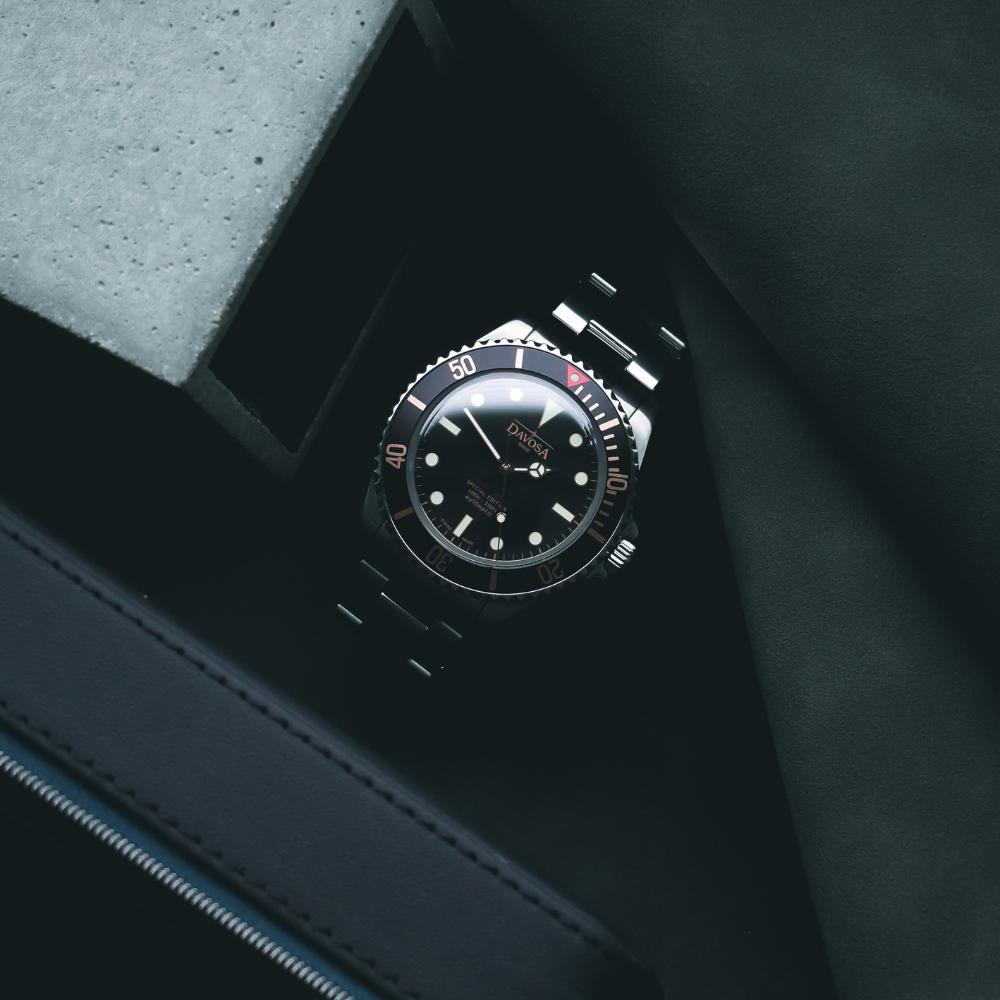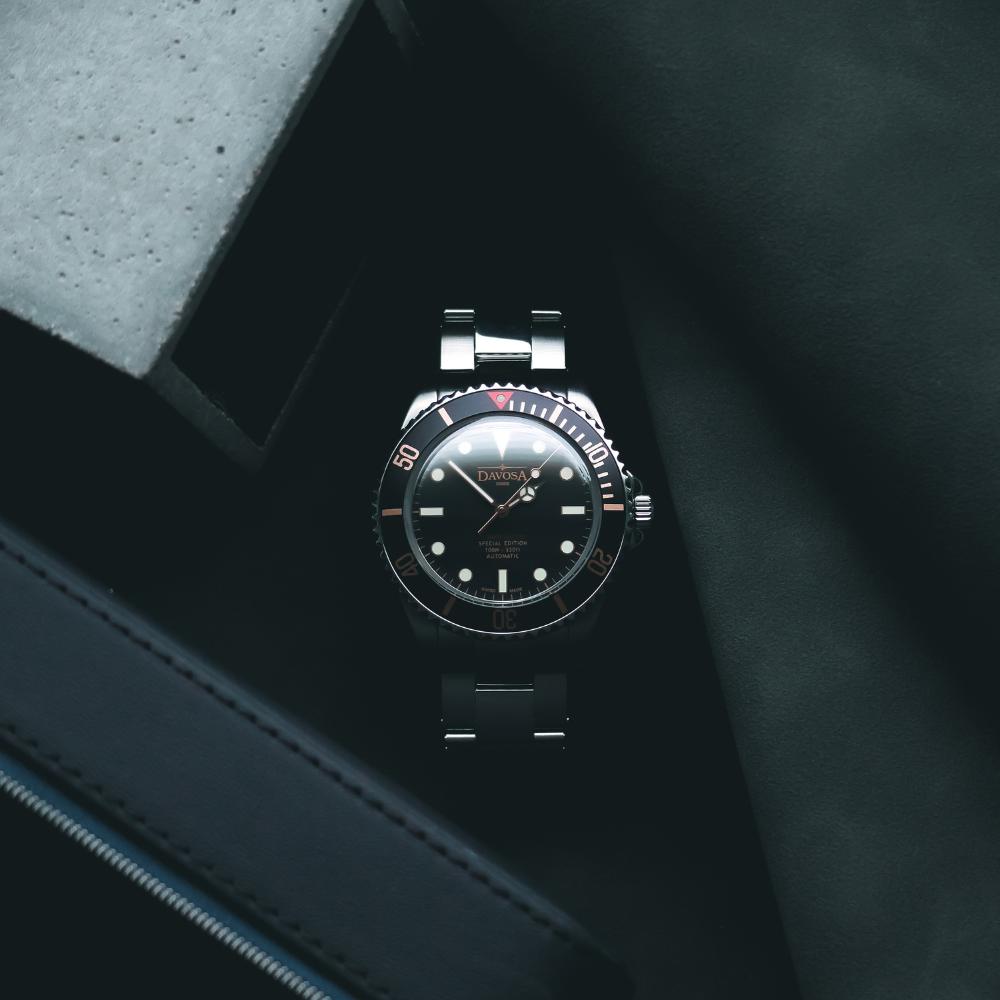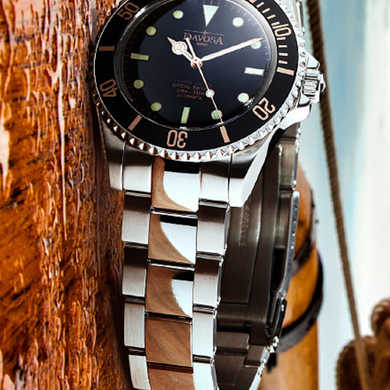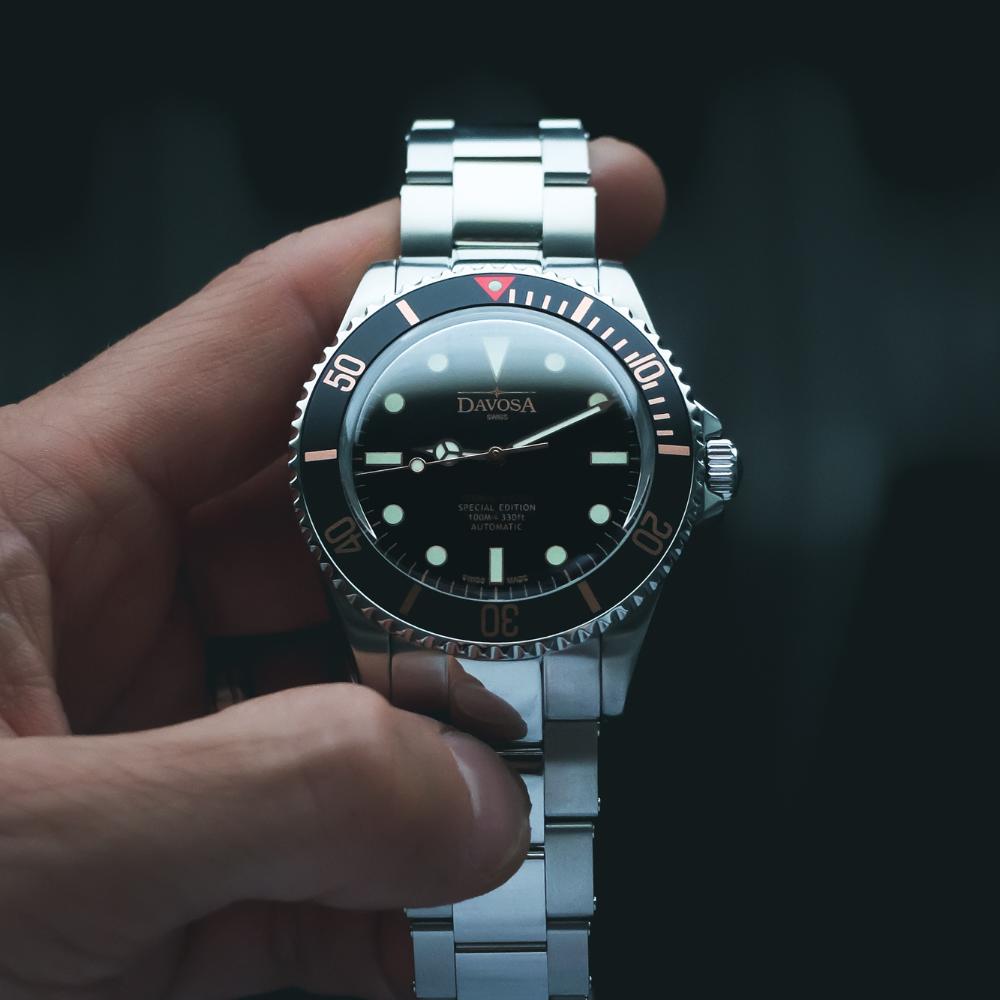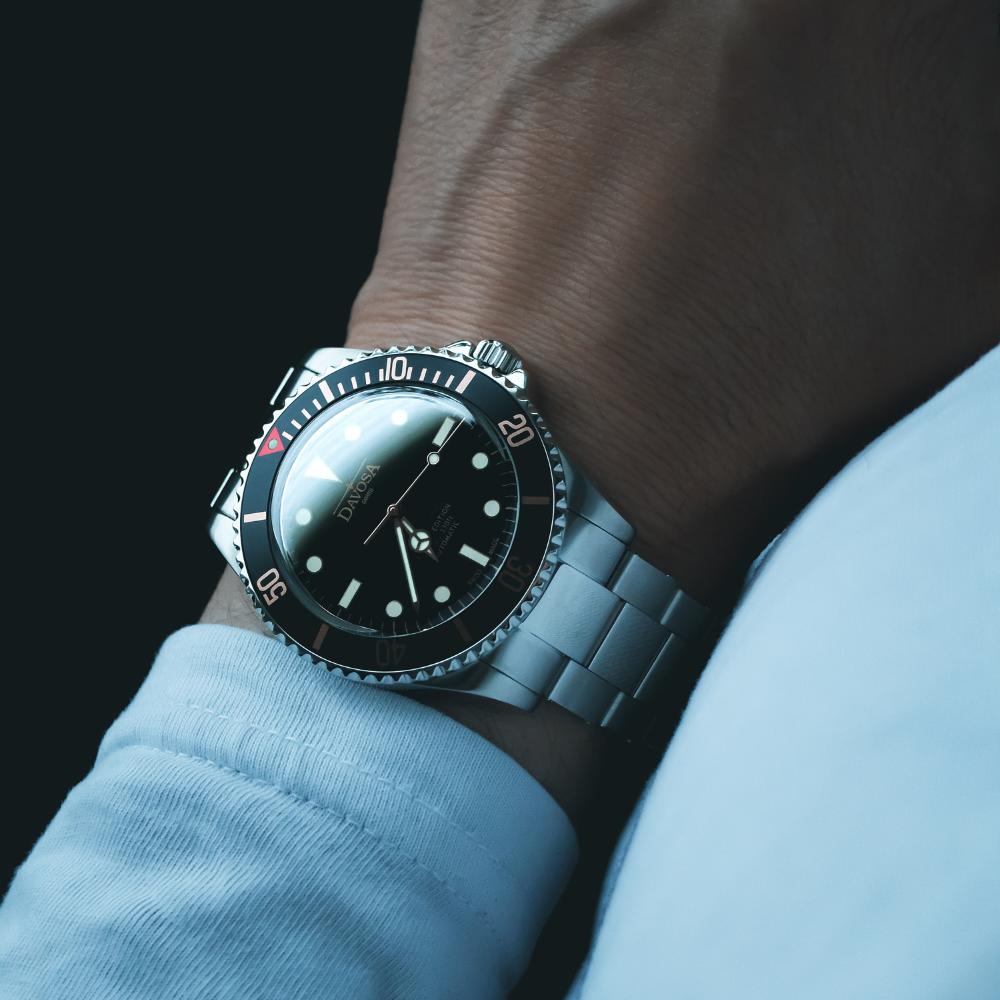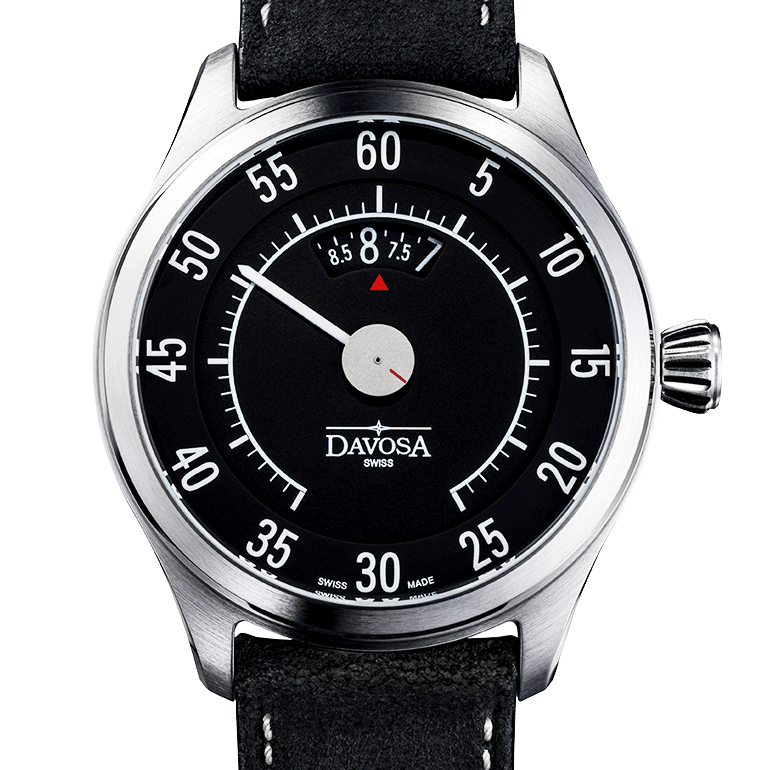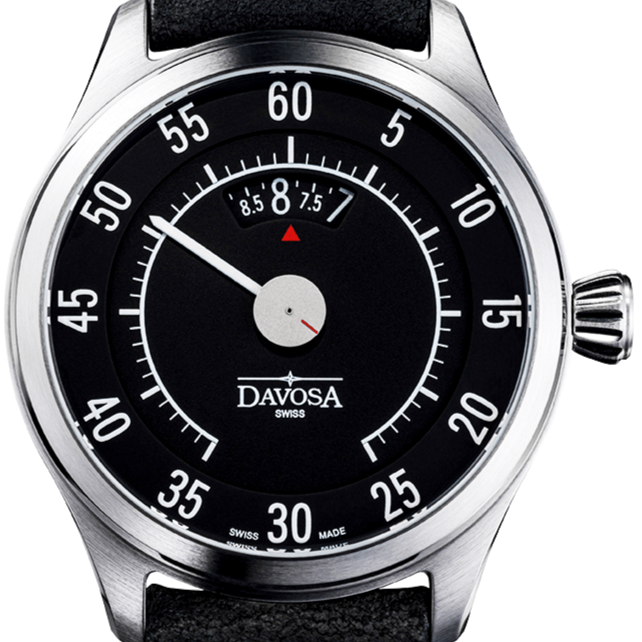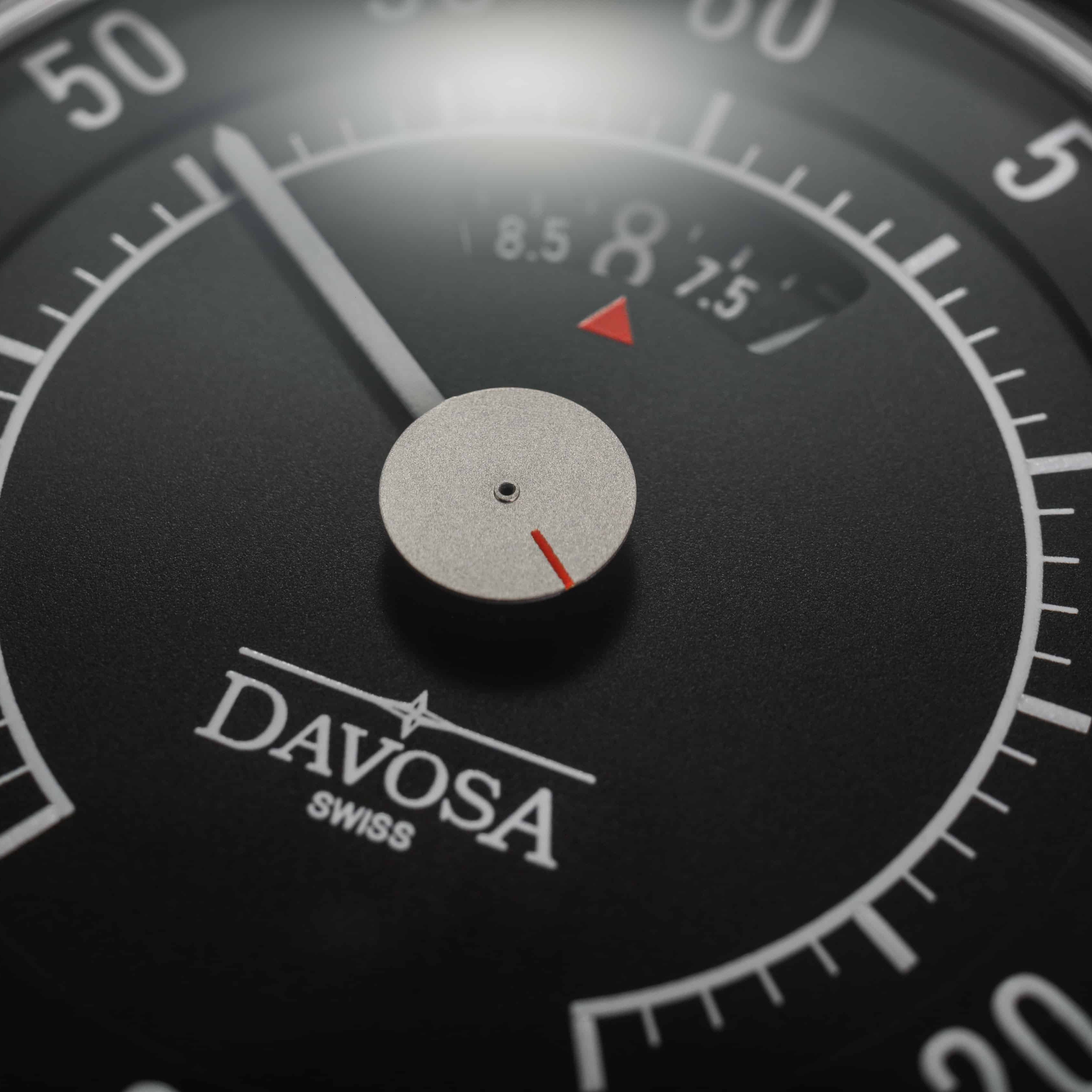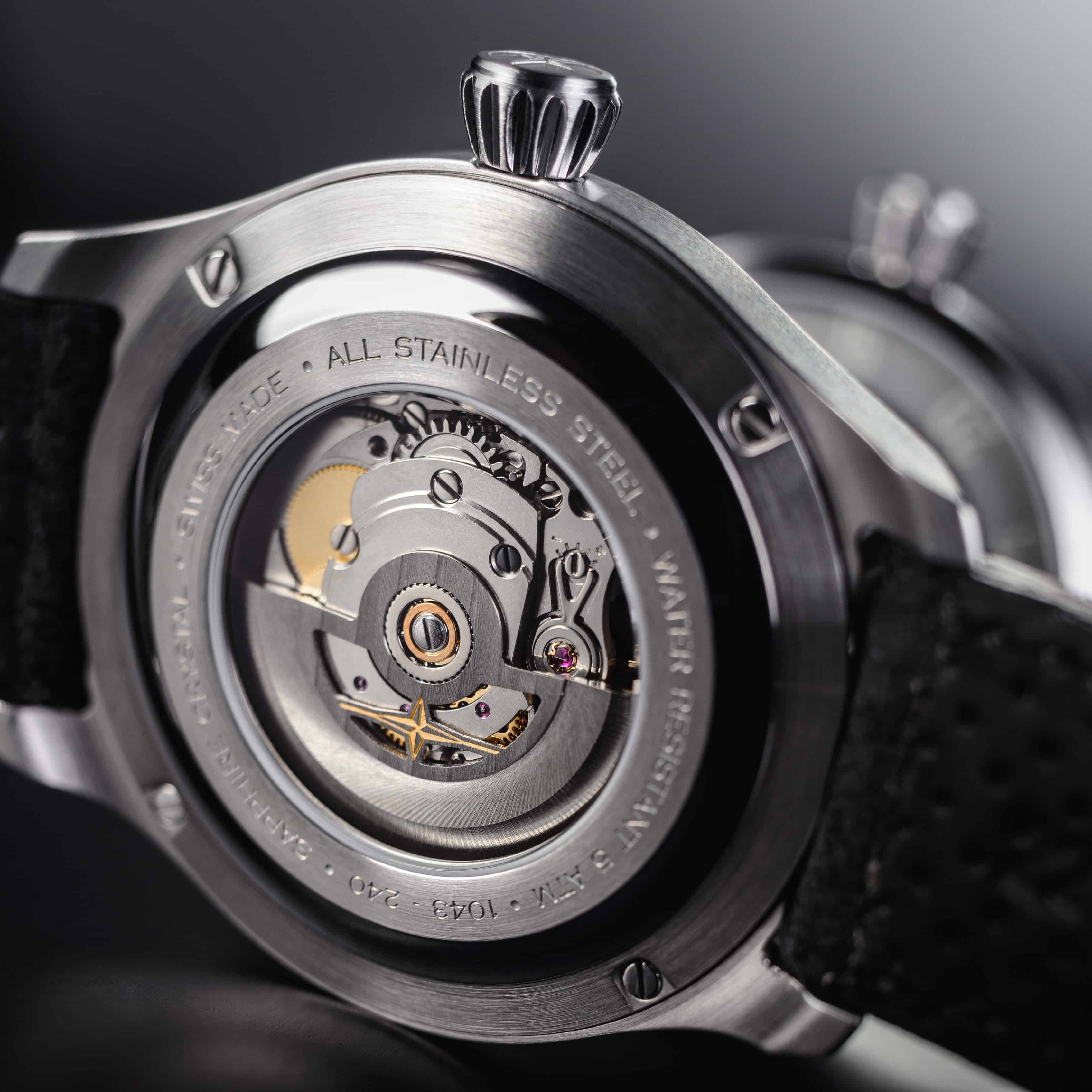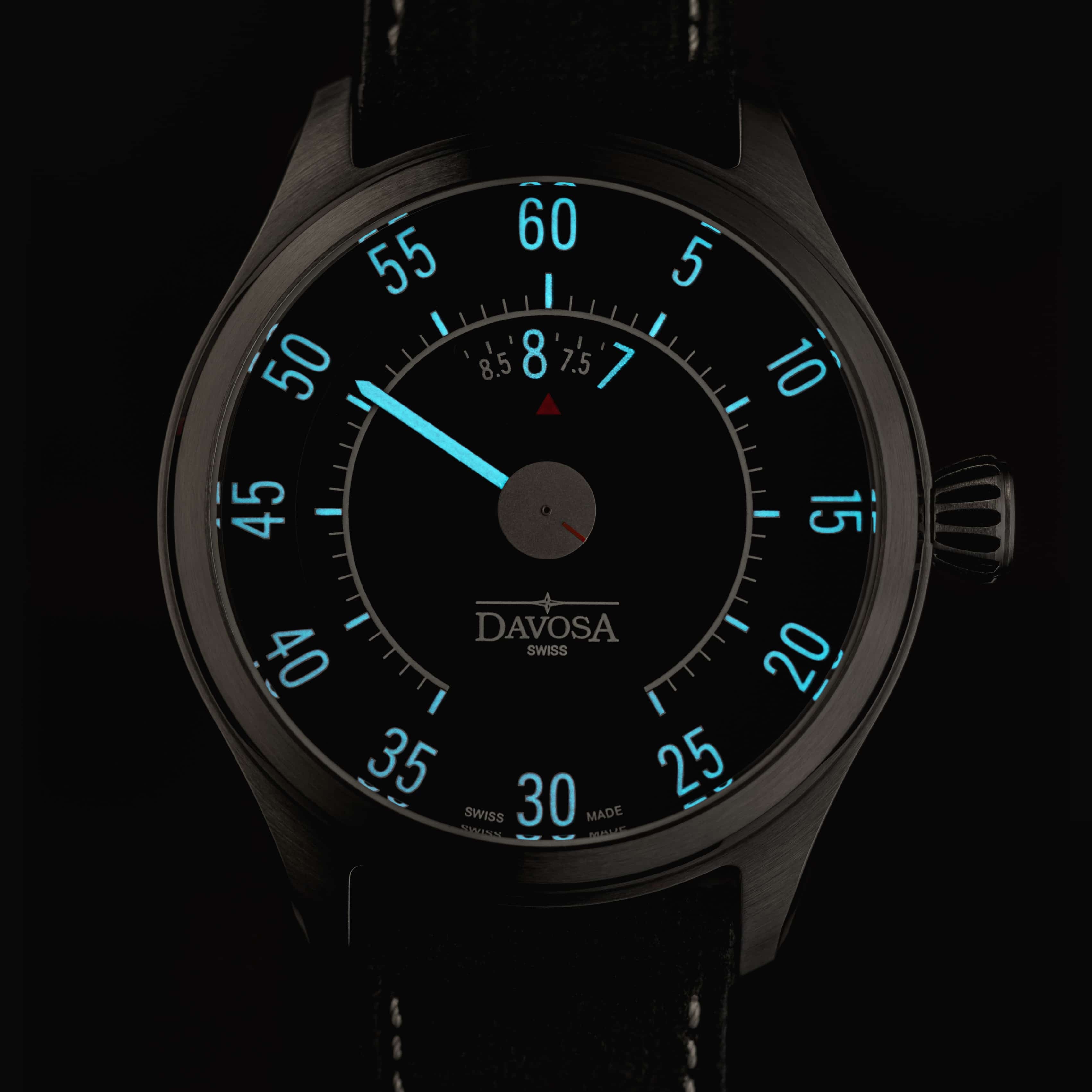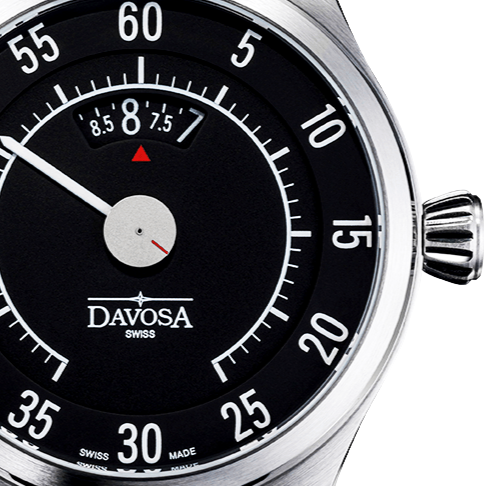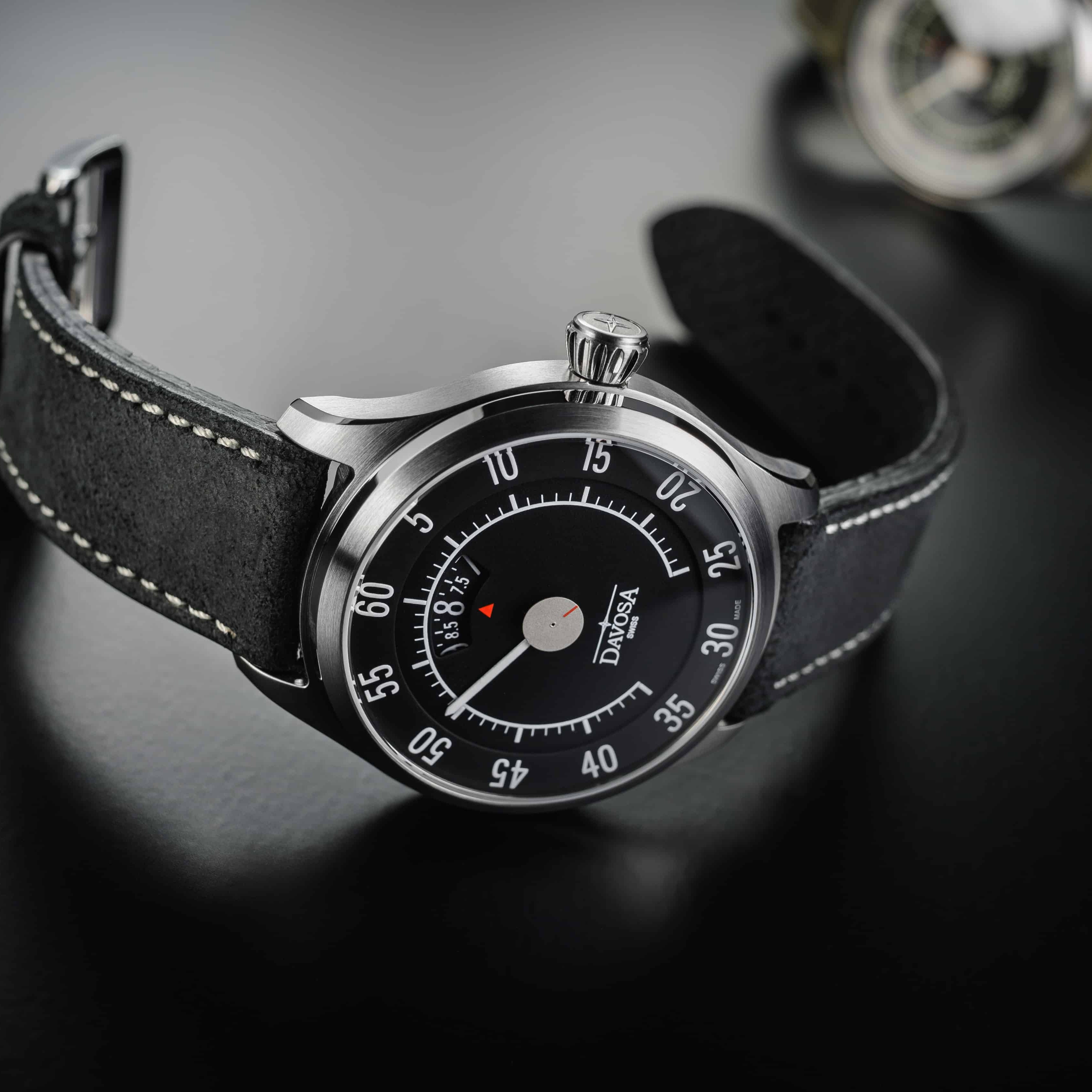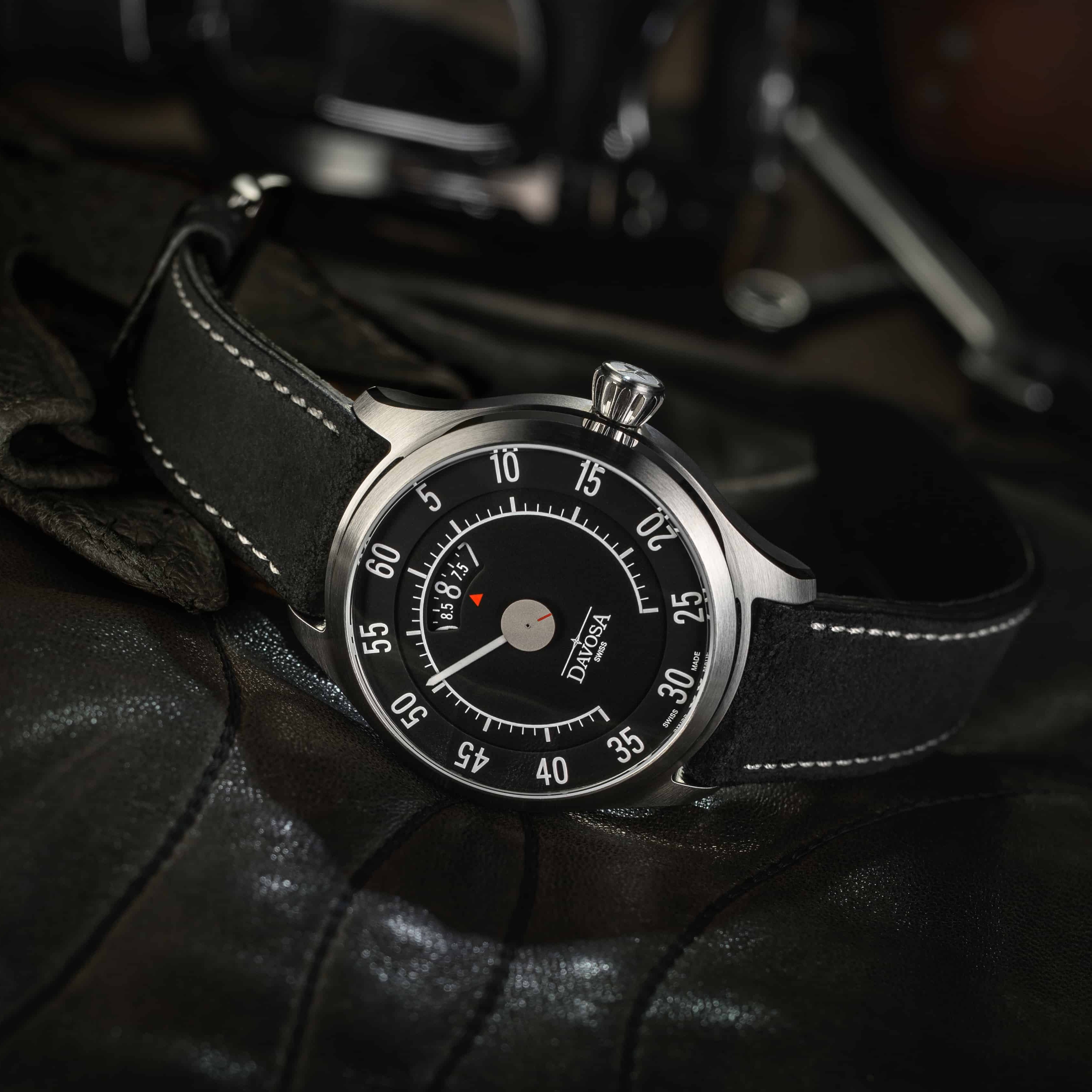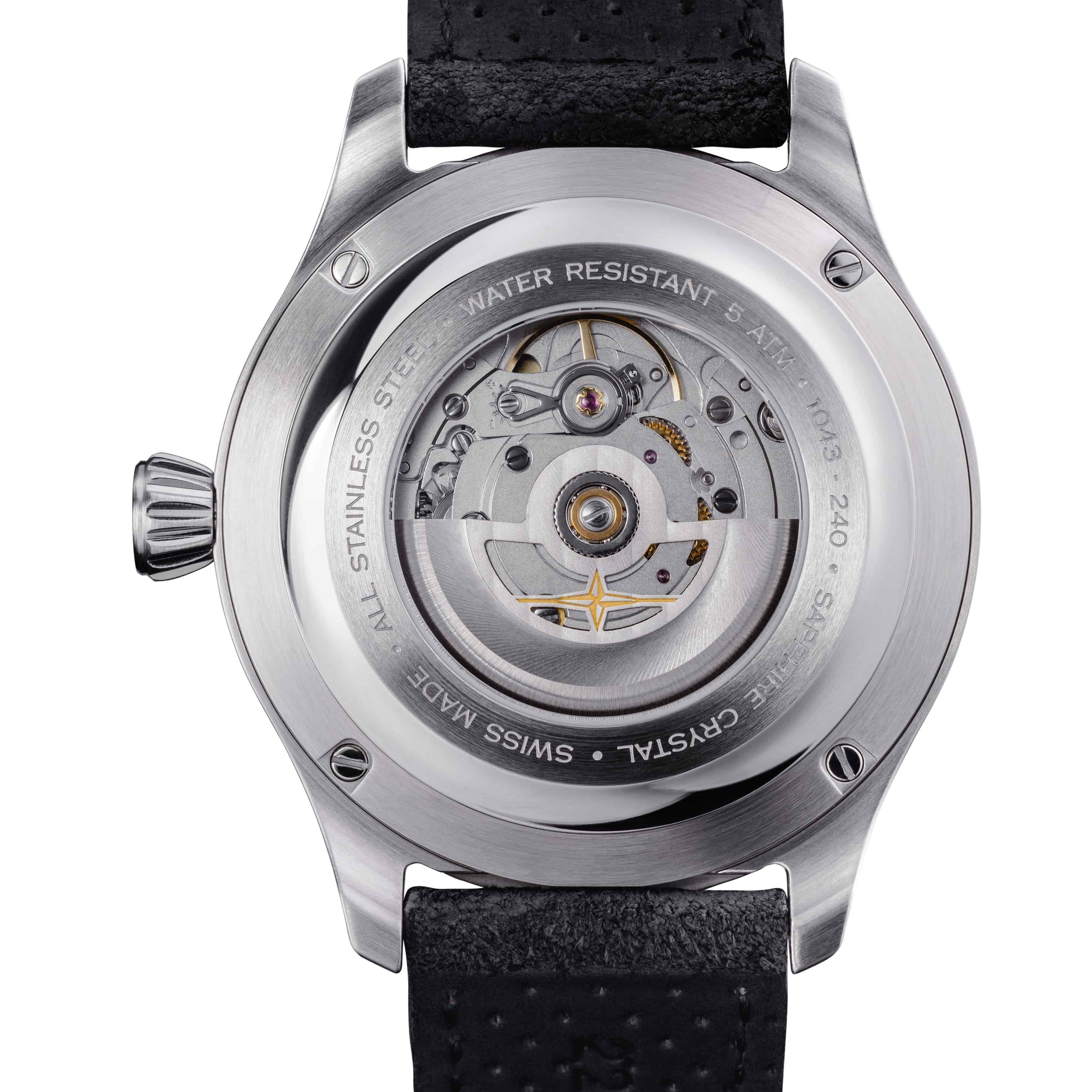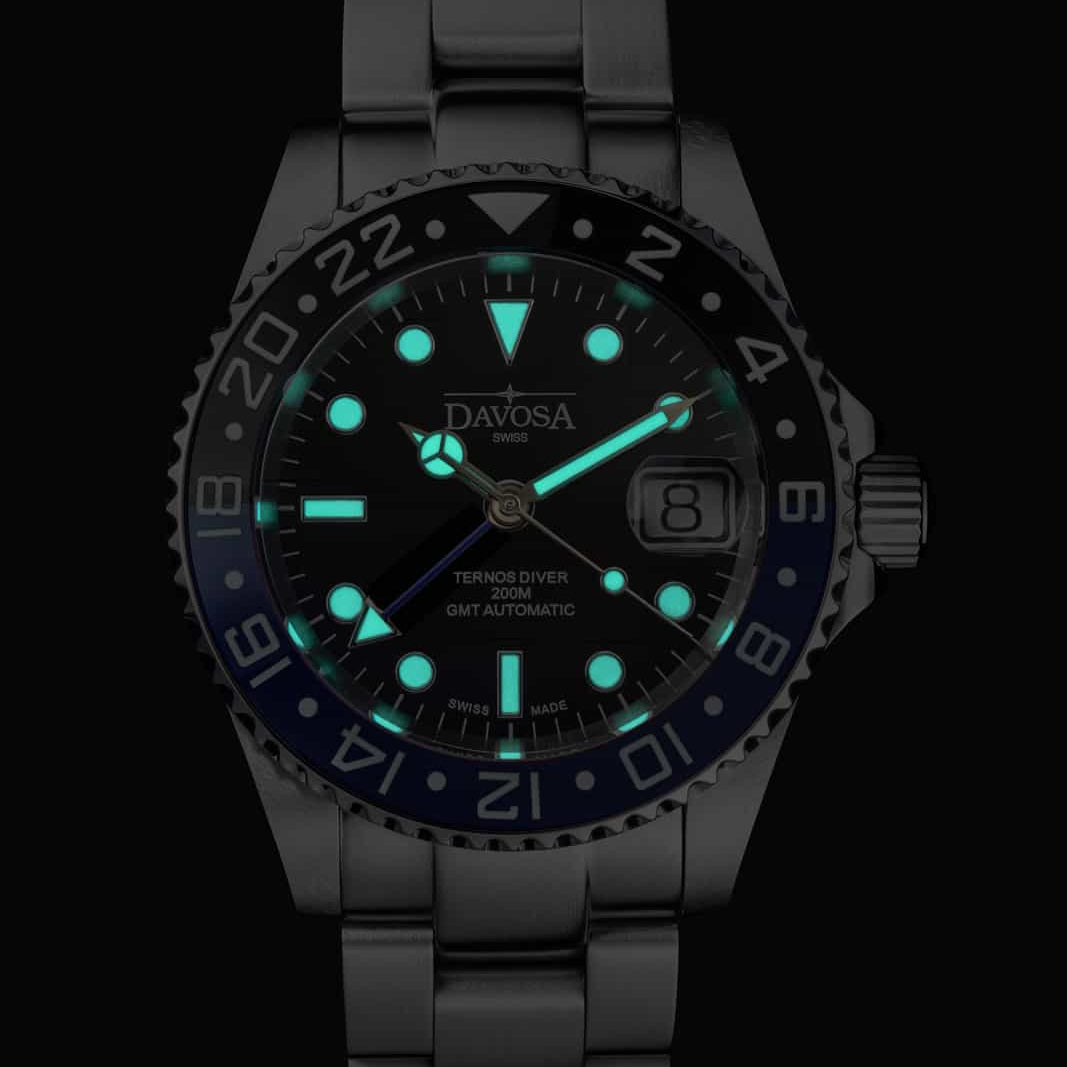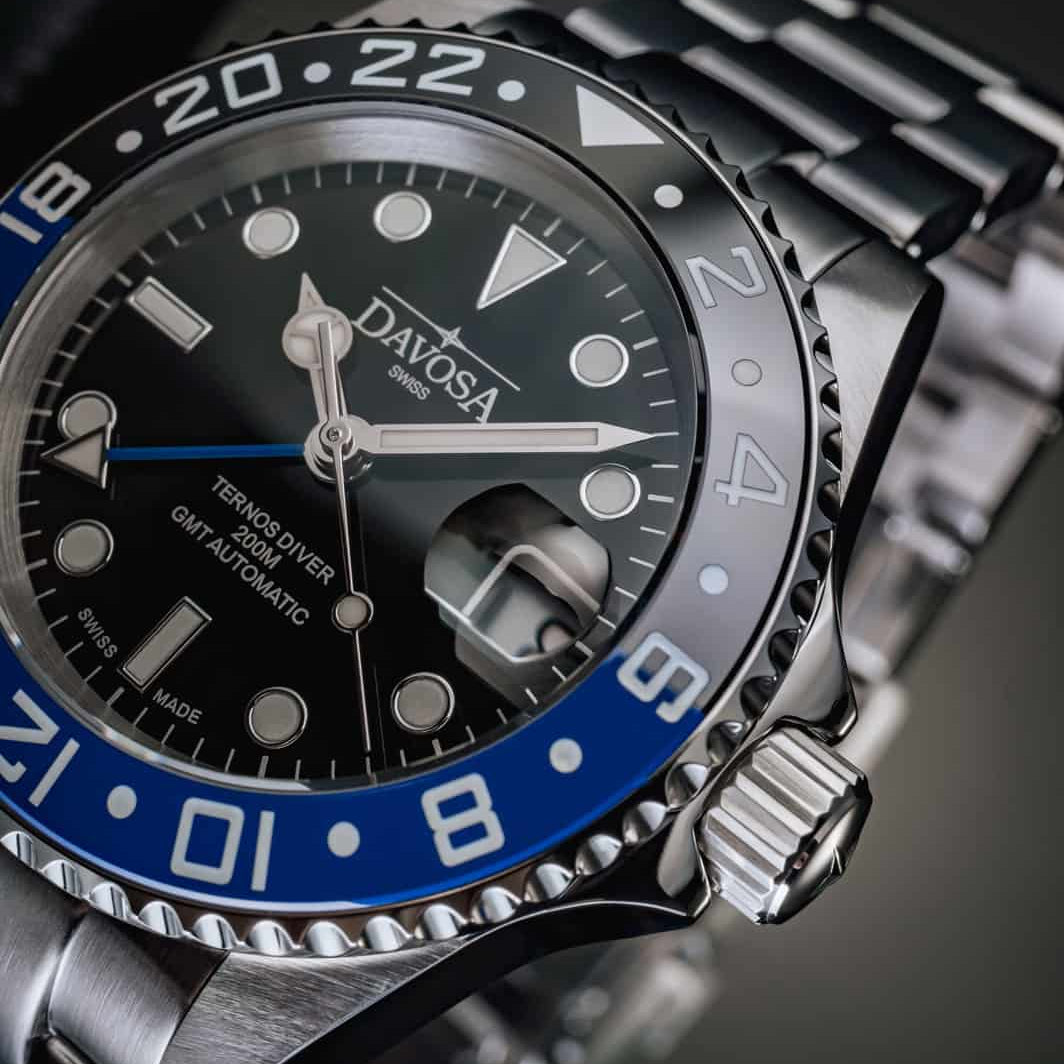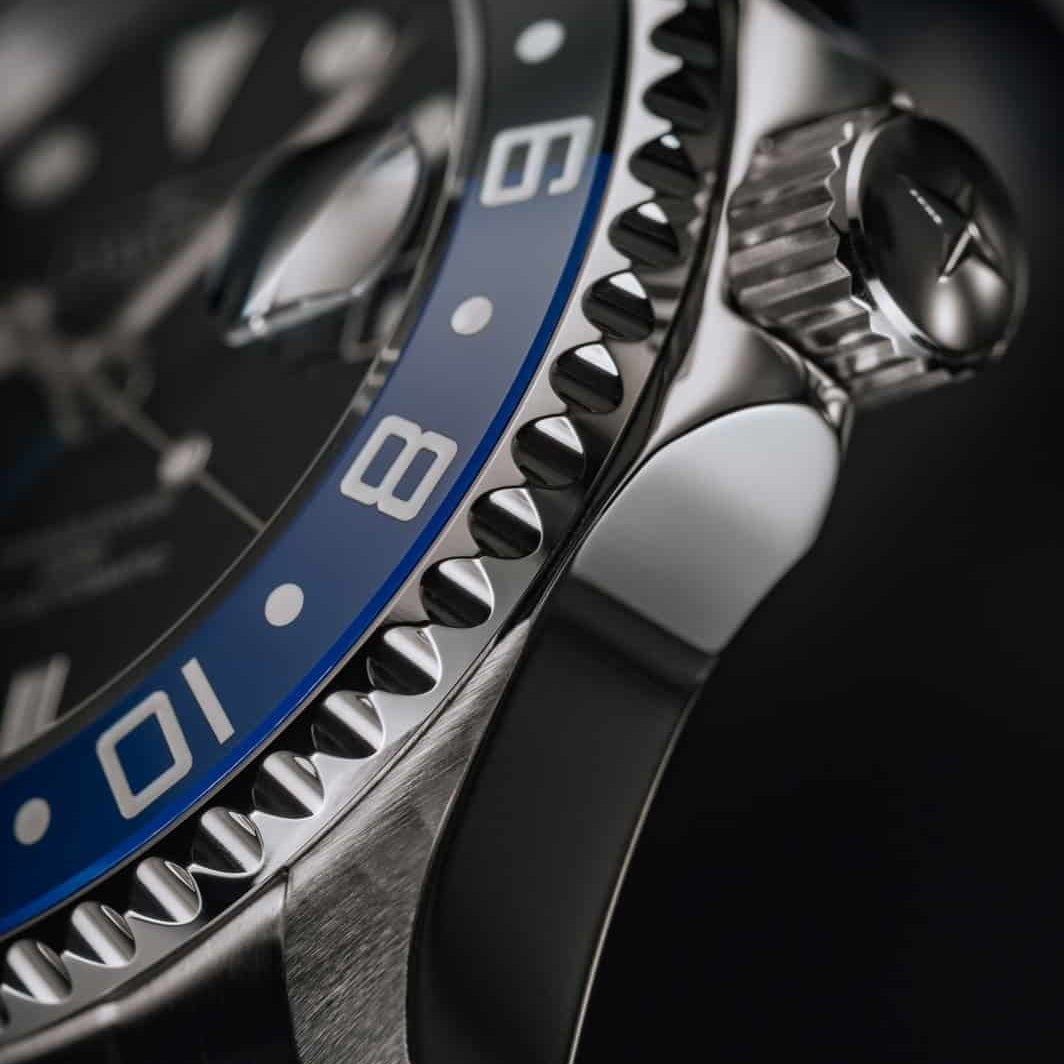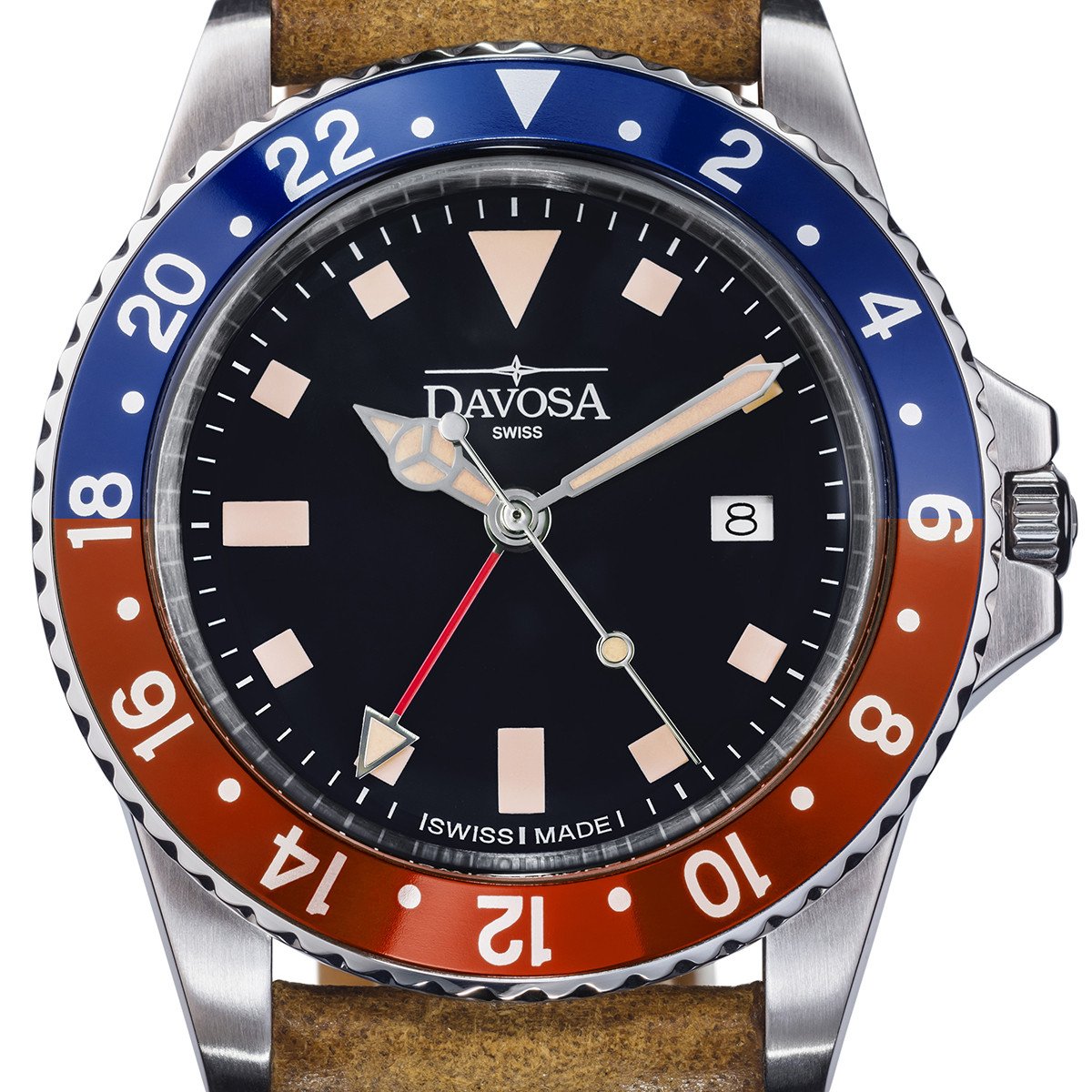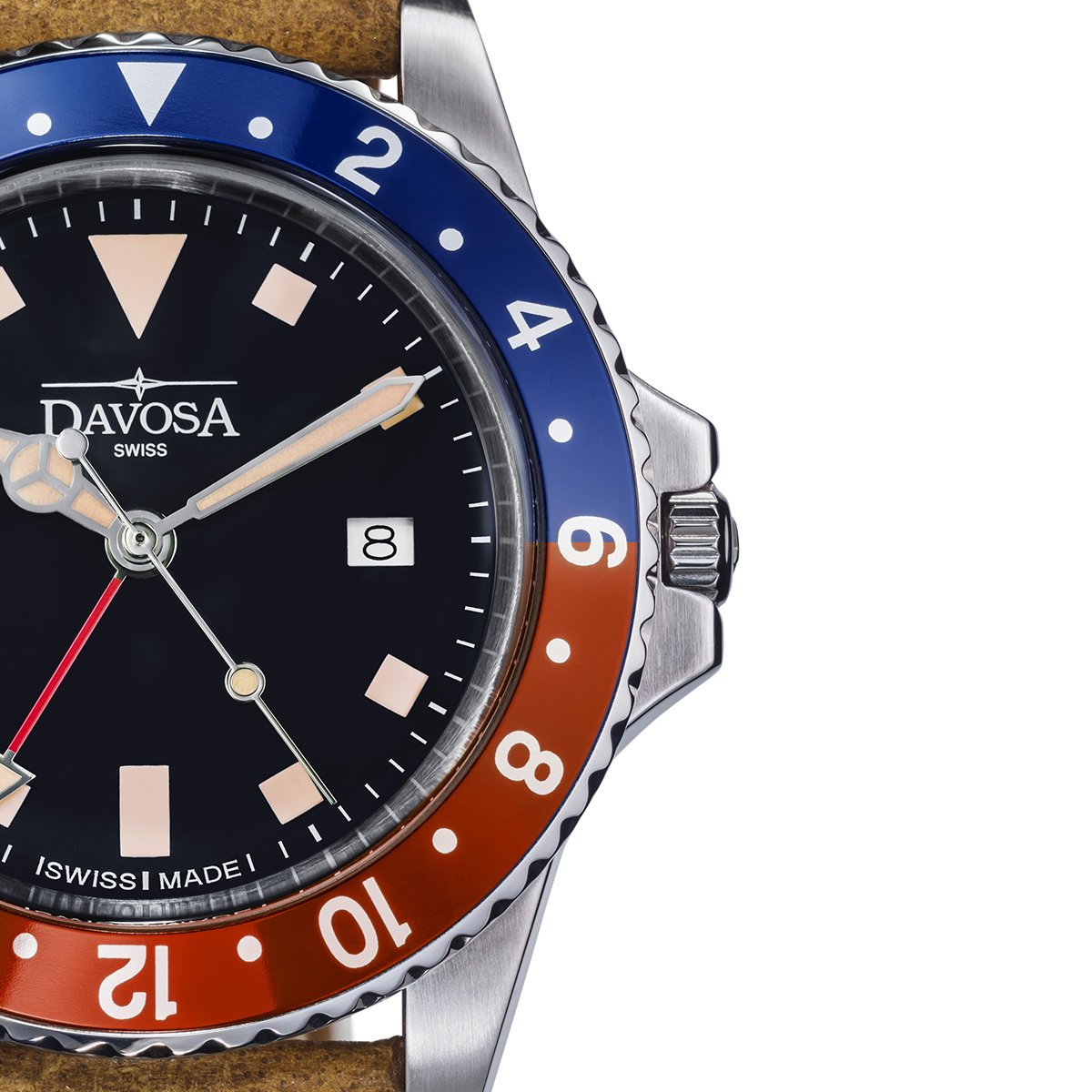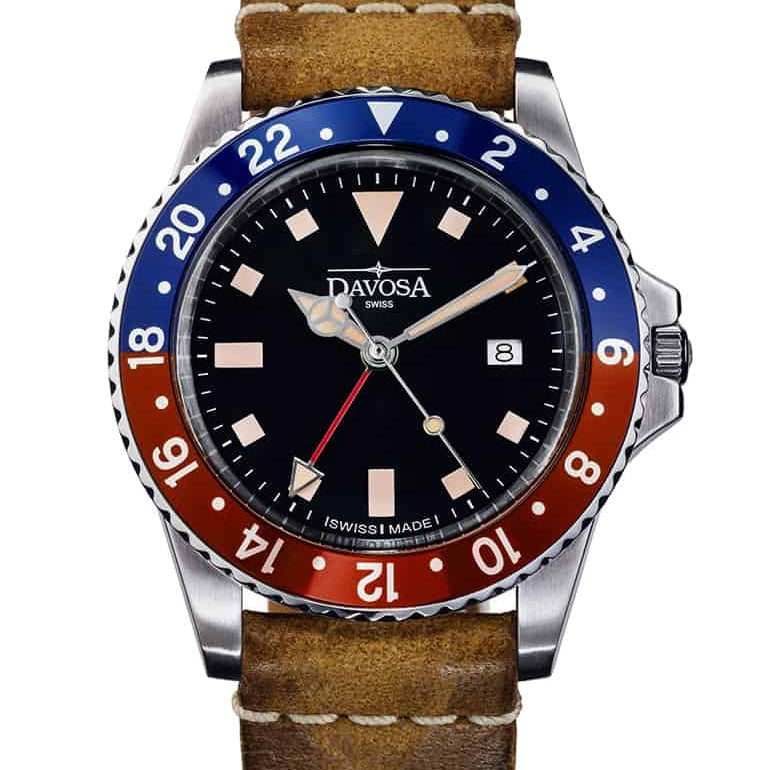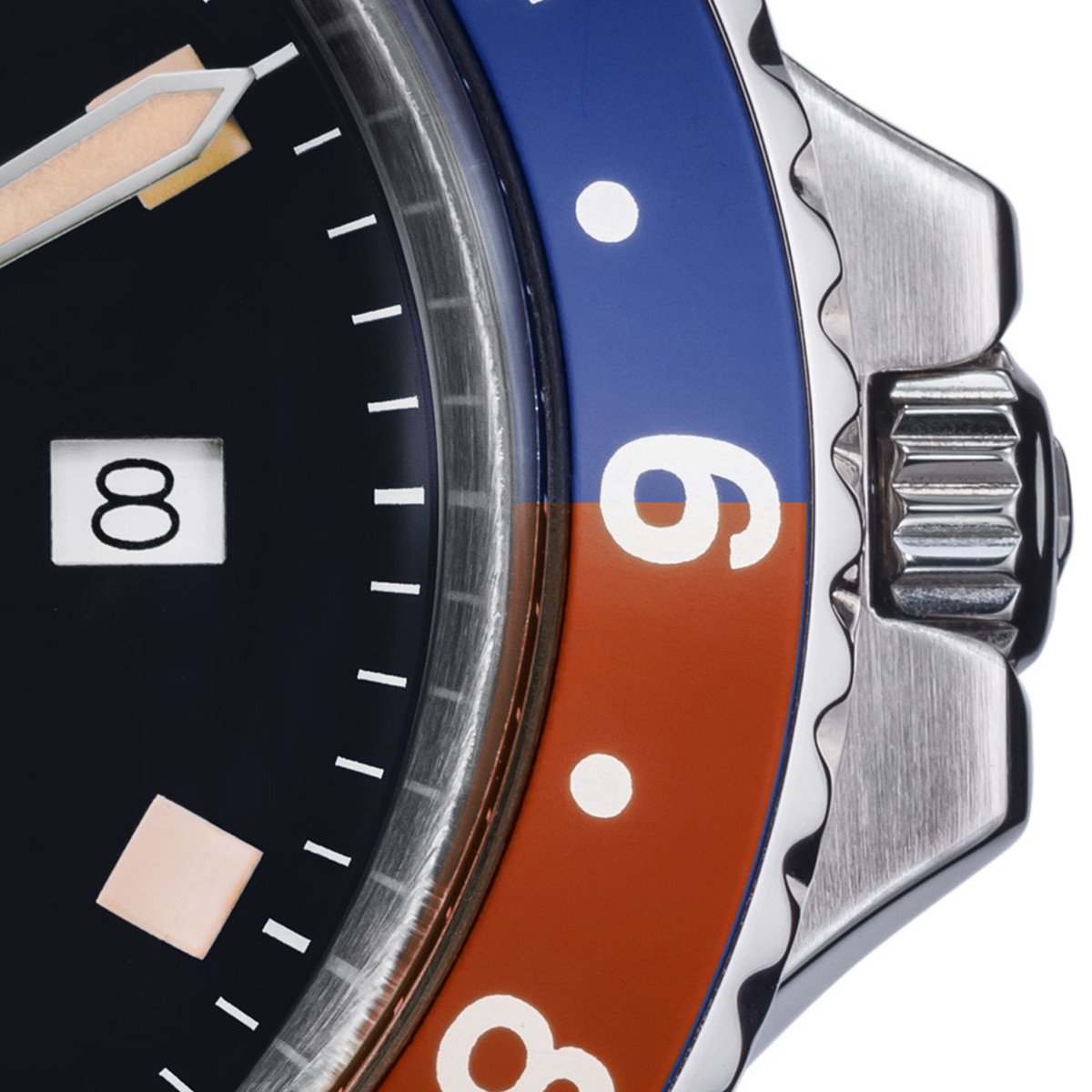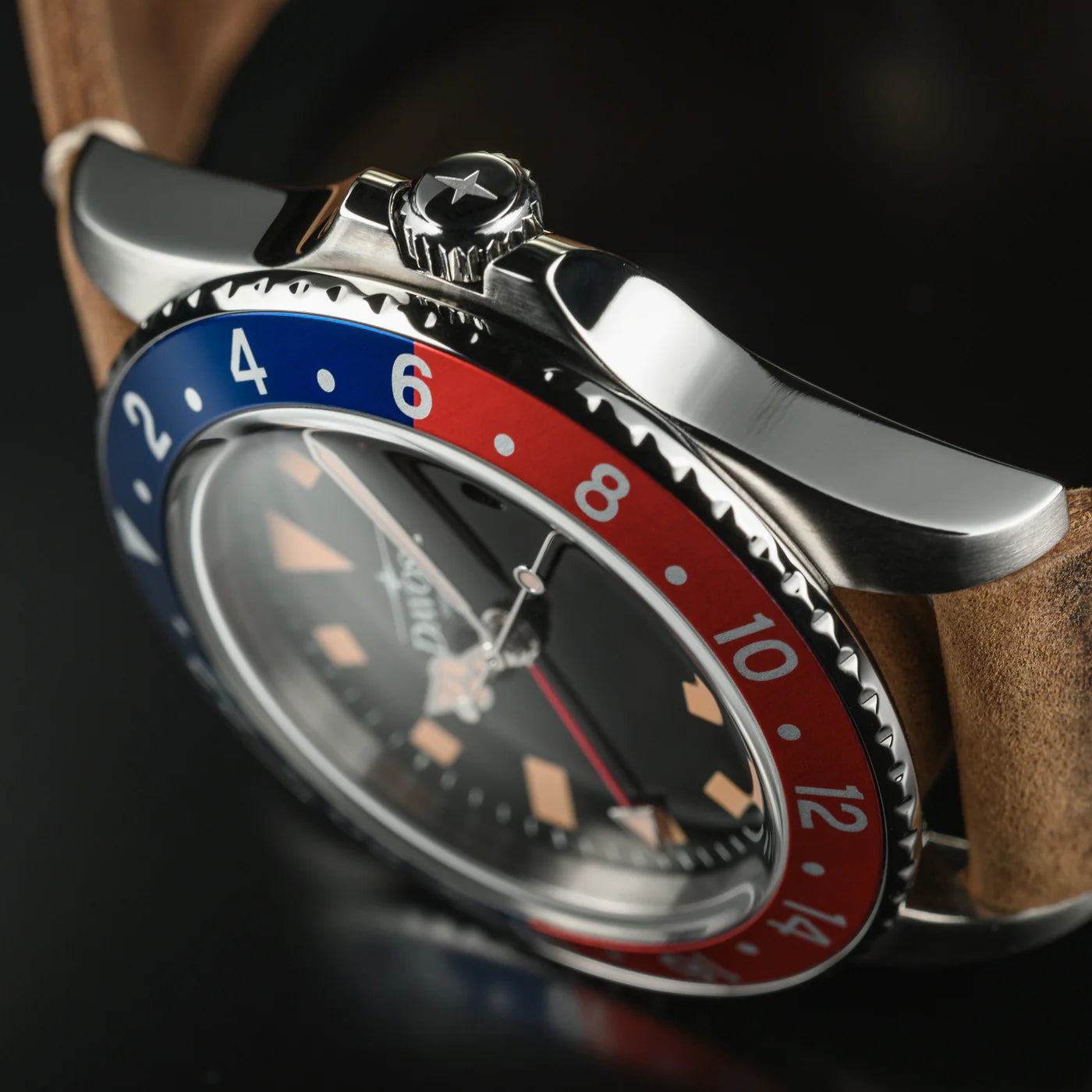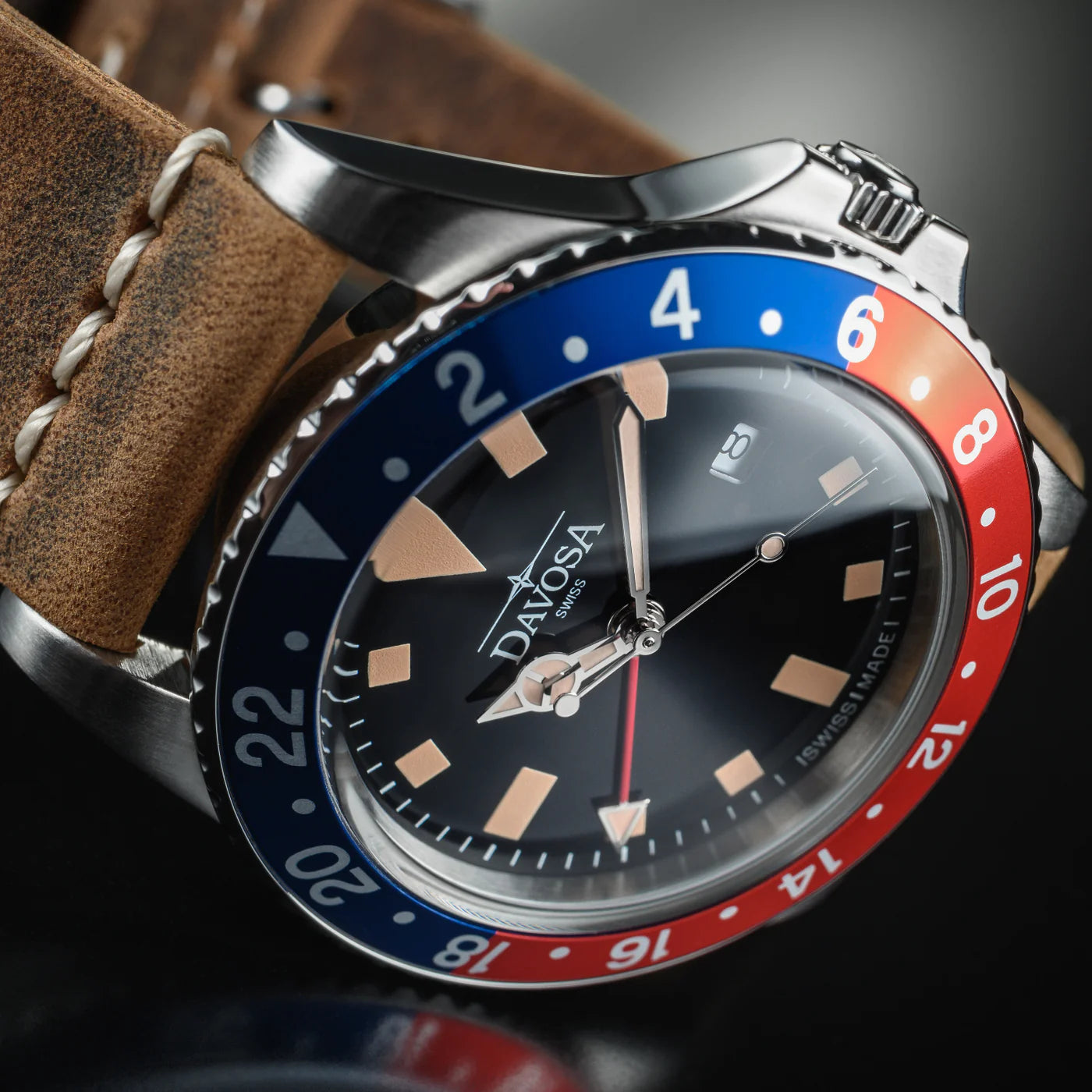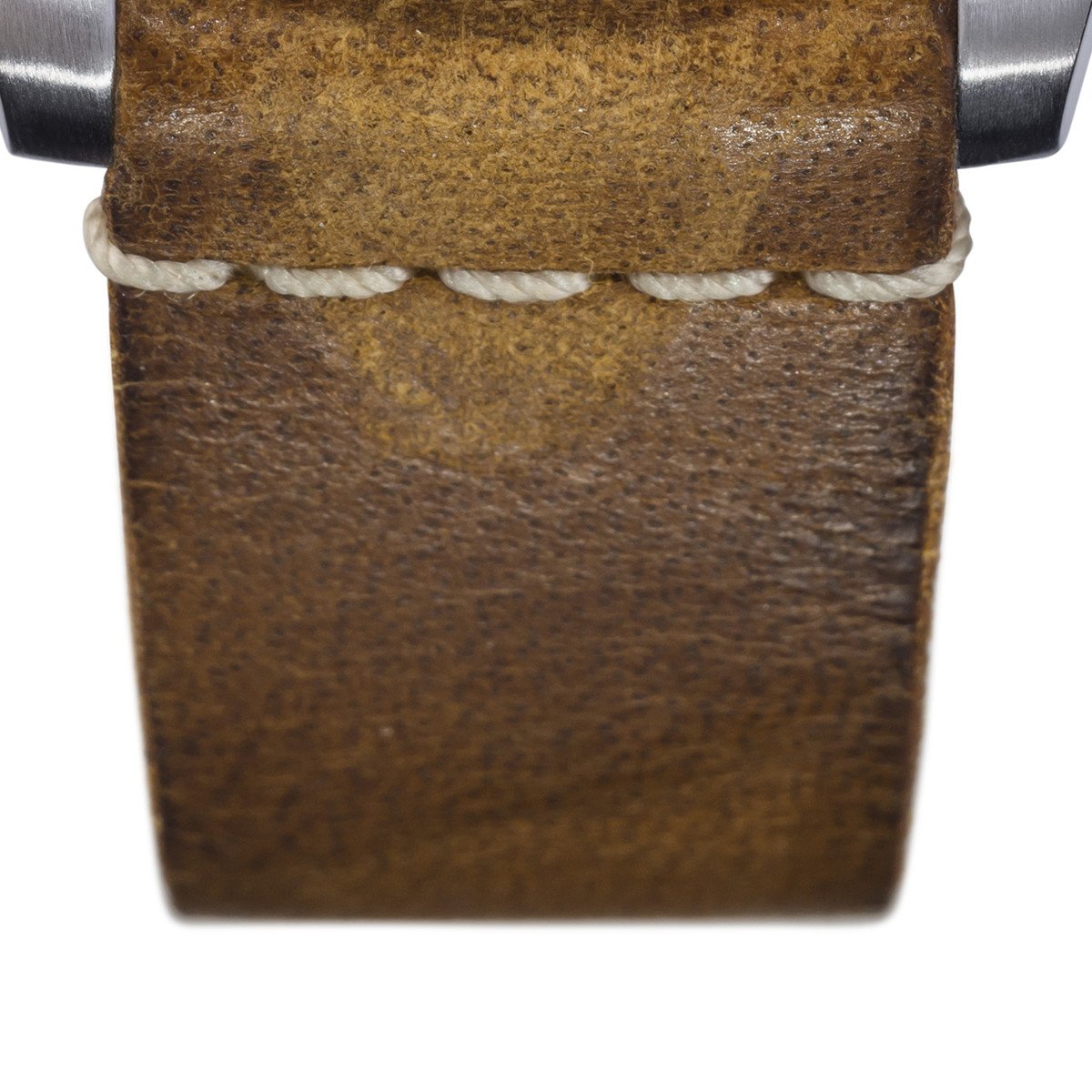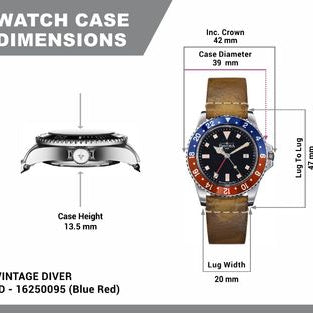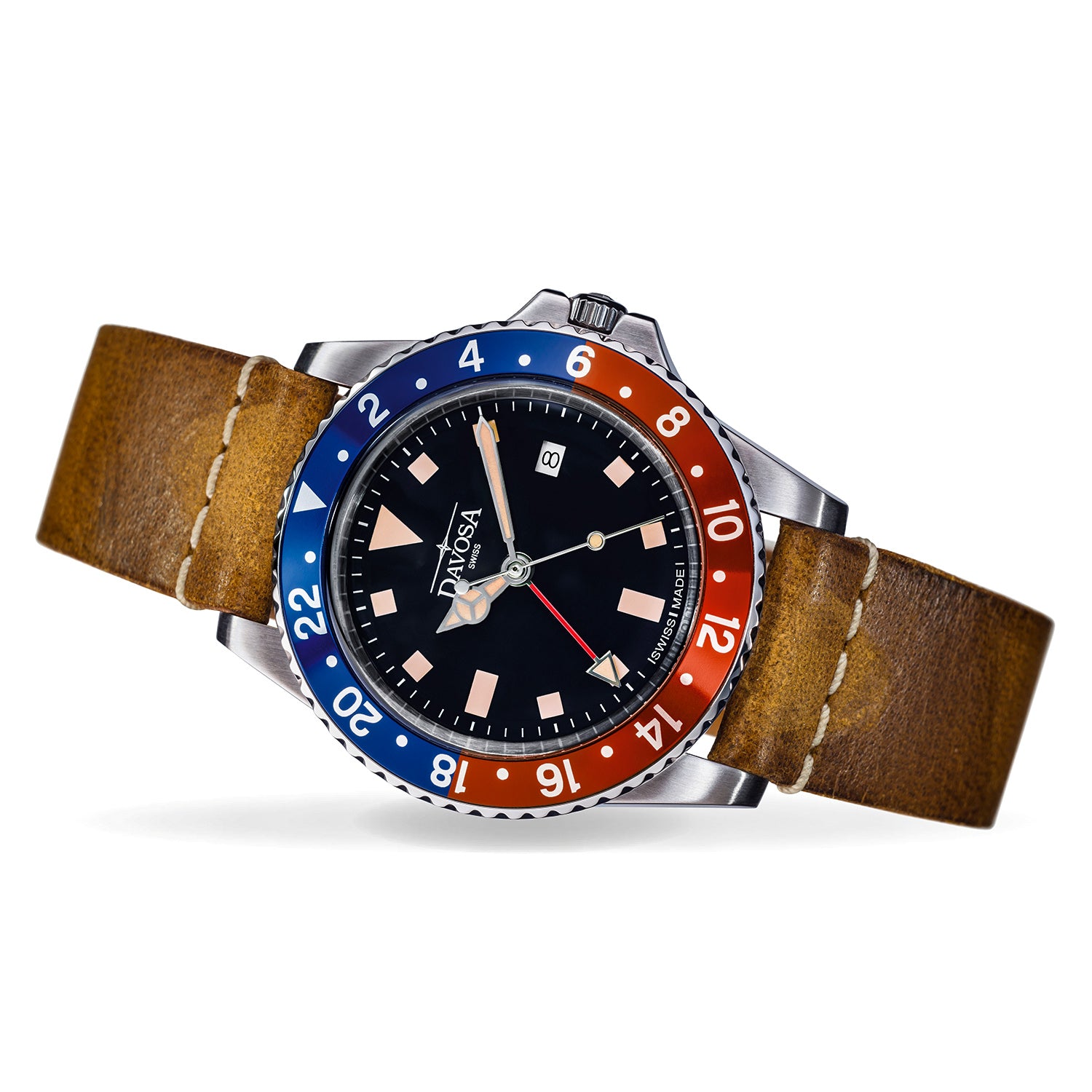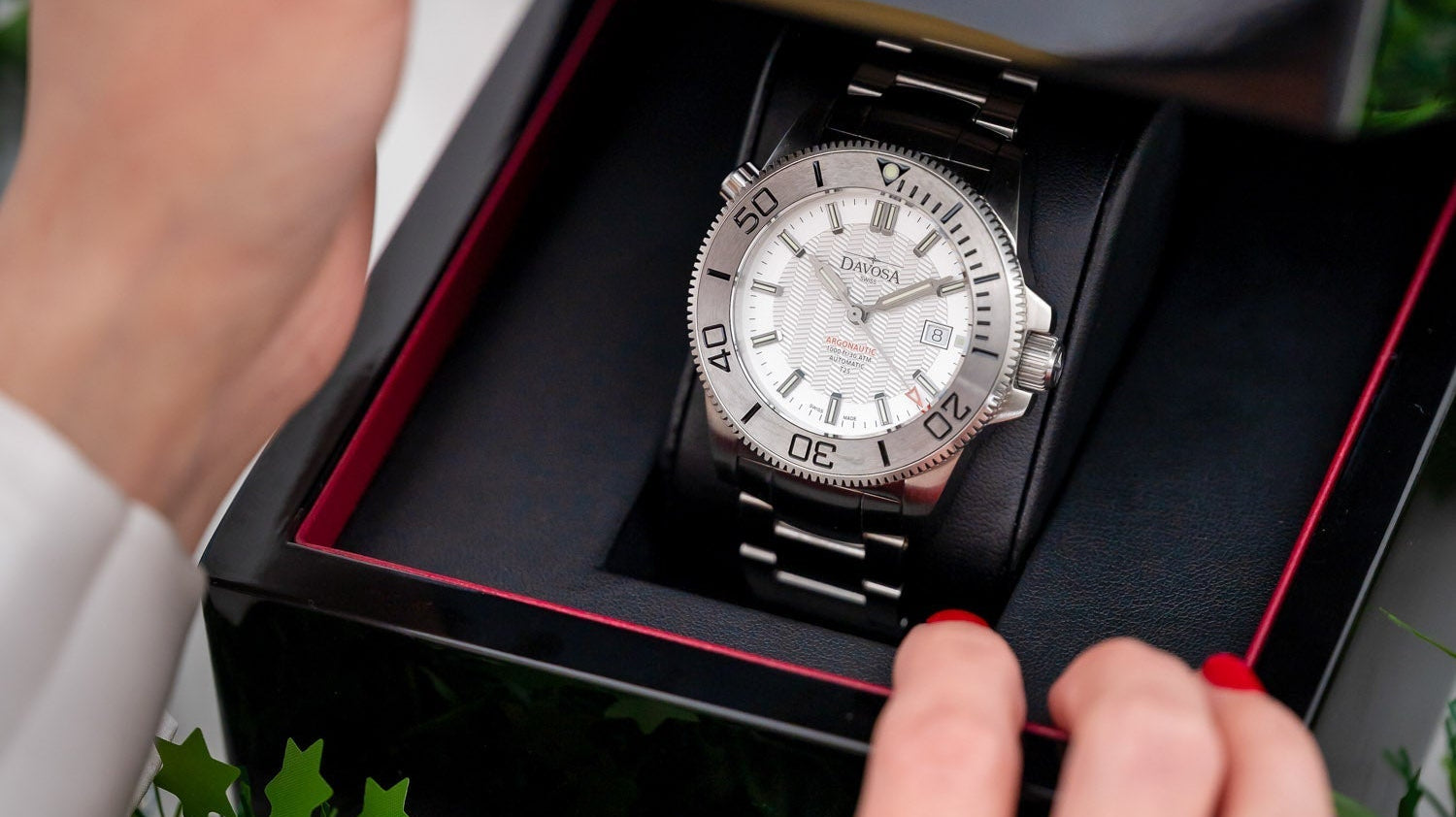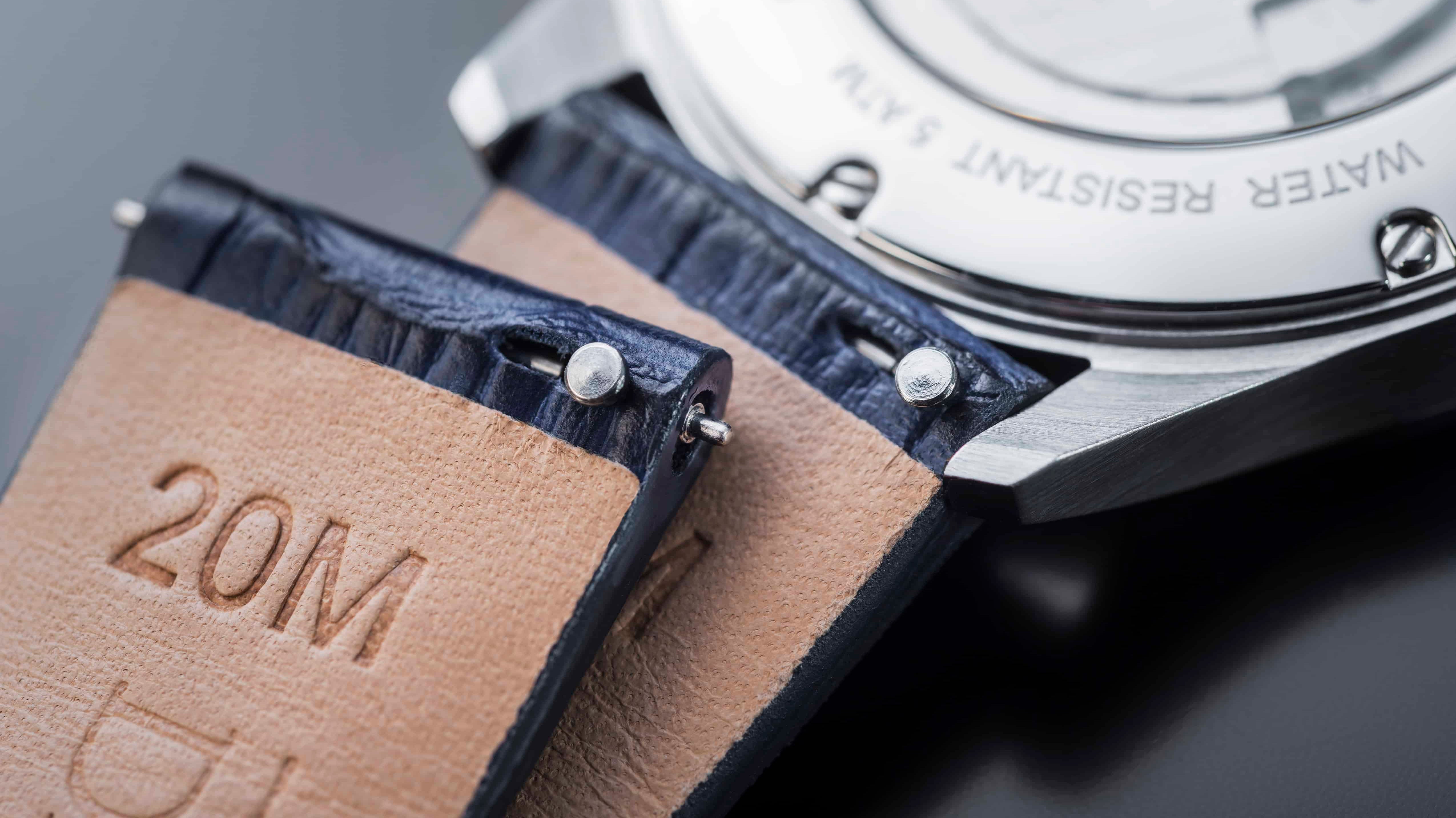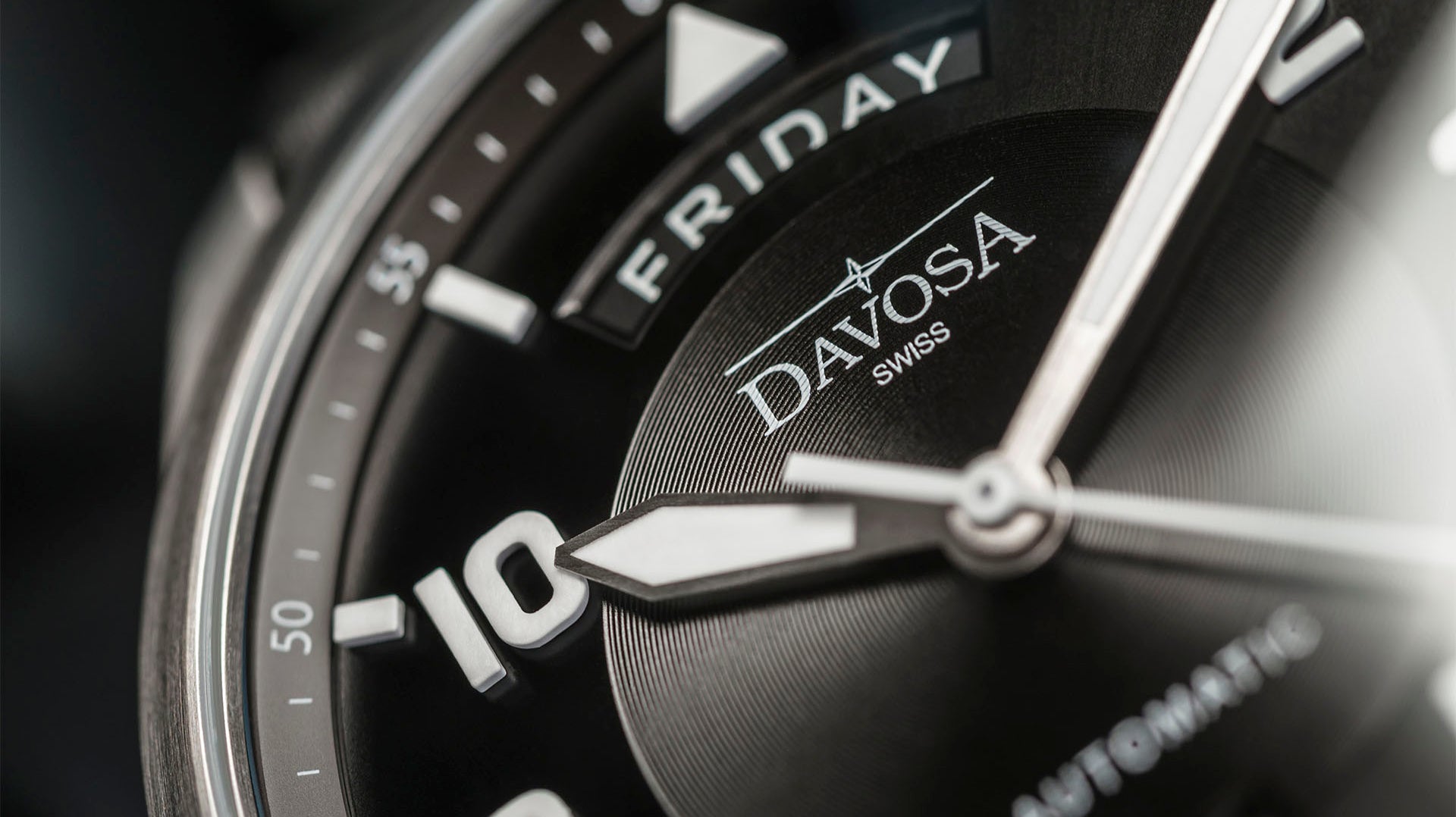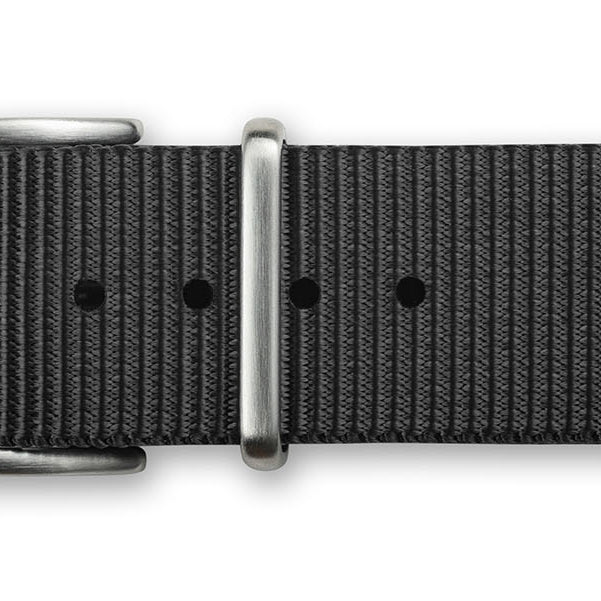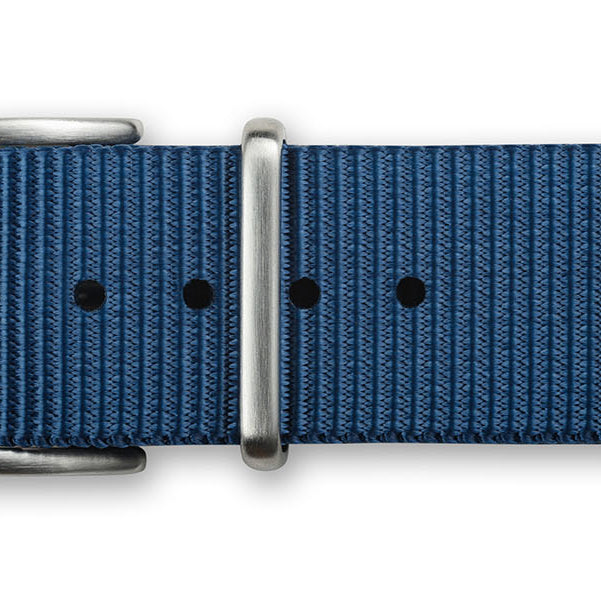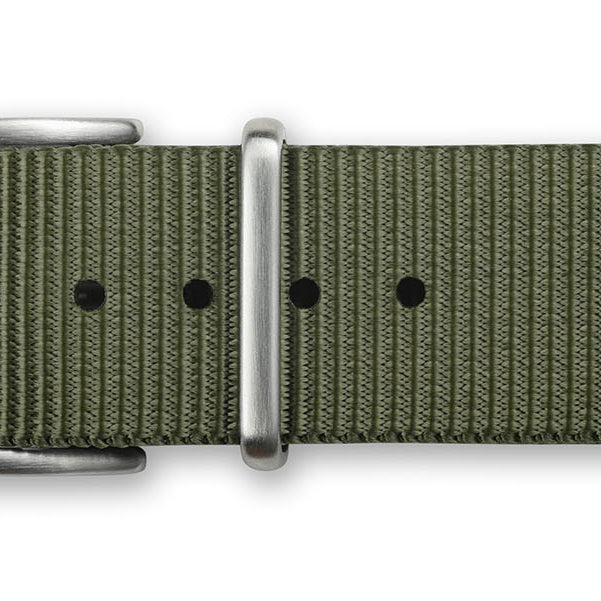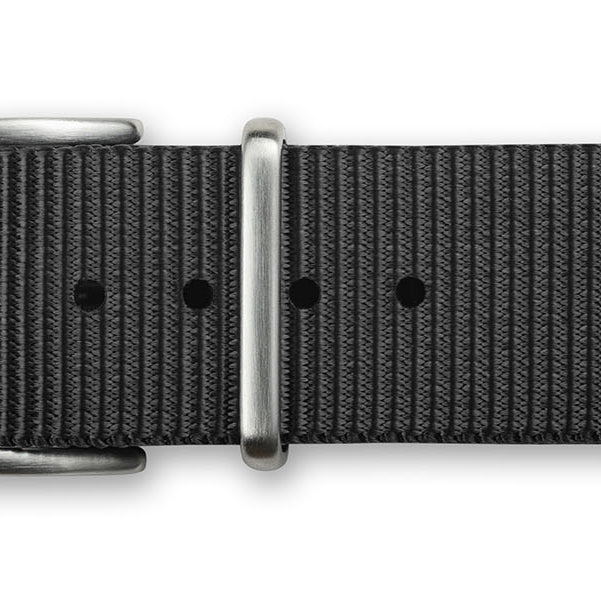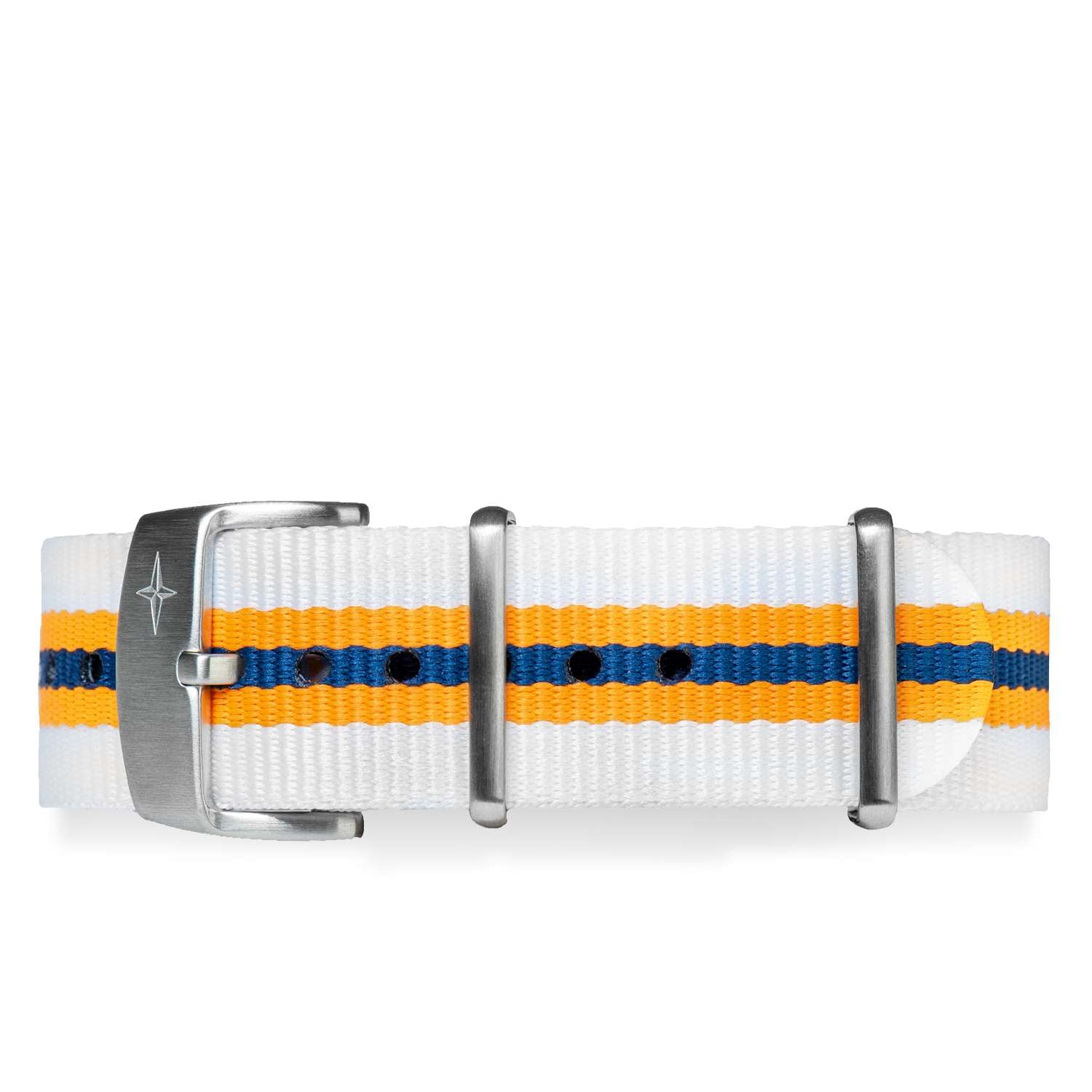September 19, 2021
A GMT watch is a kind of timepiece that takes us back to the early days of international air travel. Those were almost heroic times for civil aviation, made up of airliners derived directly from World War II bombers, with their powerful rotary engines whipping through the air, pushing the aircraft's nacelle and its content through several intermediate stops to reach the passenger's final destination.
Of course, times - and air travel - have changed a lot since then, so much so that today, with the growth of the modern low-cost airlines, air travel has become almost a commodity. But the importance and function of our GMT watches have never changed, nor has their exotic appeal, and now we'll examine it together.
What is a GMT watch?
A GMT watch is a kind of "tool watch" - that is, a timepiece designed to achieve a specific purpose - a bit like divers watches, made to work under water - but the scope of a timepiece with a GMT function is to tell you the time in multiple timezones simultaneously using the same dial and movement. As you can readily understand, this is a handy function for international travelers, pilots, and airplane crews.
There are countless models of GMT watches, from the most elegant and sophisticated to the simplest and sturdiest, but most of them use a double hour hand for their operation, which is adjusted to two different time zones.
The traditional GMTs use a mechanical movement, and are often automatic watches, practically indistinguishable from a regular timepiece, except for the presence of the very discreet additional hand tracking the hours.
Still, some of them use a practical 24-hour display on the dial instead of the usual 12. This is what happens with the Glycine Airman, the first GMT watch ever devised, launched in 1953, which preceded the most famous GMT, the Rolex GMT Master, by a year and carries a 24-hour display on the dial. This allows us to know precisely whether it is day or night in the timezone of our interest without getting lost in mental calculations.

What does GMT stand for?
GMT is an abbreviation of Greenwich Mean Time, or the "median" time, calculated at the Greenwich Observatory in England. The meridian passing through Greenwich is the reference from which all other time zones in the world are calculated, dividing our earth into 24 "segments" more or less extensive (as some large countries adopt a single timezone, like China), separated by one hour.
Although this is undoubtedly a great honor, the greatest proponent of the importance of timezones and the synchronization of hours was not an Englishman but a Scot. Sir Sandford Fleming, born in Scotland but a citizen of Canada, in 1879 proposed a worldwide system of time zones at several international conferences, which was finally accepted in 1883.
Airplanes were still a faraway dream at that time, but establishing a coordinated, precise timekeeping system was already necessary to synchronize the long-distance trains that connected cities in the U.S. and Canada and avoid mishaps.

How does a GMT watch work?
A typical GMT watch, as we mentioned, has two hands that measure the hours, but there is a traditional watch movement powering it. The normal one makes one revolution of the dial every 12 hours. On the other hand, the GMT indicator is set to move at half speed and thus, cover the entire dial in 24 hours. This allows us, at a glance, to see the two reference timezones and immediately calculate whether it is day or night in the one we have set as "base."
As we know, the different timezones are typically separated by one hour, although there are several exceptions. In the most common special cases, such as India and Sri Lanka, the timezones diverge by 30 minutes. In this case, the minute hand is also used to keep the right time. In some GMT watches this hand features a kind of small "tail" that serves precisely to indicate the exact minutes for this purpose.
But, as you might notice, some places have timezones that are impossible to calculate with a standard GMT watch: we are talking about Nepal, Eucla, and the Chatham Islands, which have timezones with 45-minute separations - and unfortunately, there is little you can do about that!
Some GMT watches can calculate a third timezone thanks to a rotating bezel with a 24-hour reference that can be set to indicate the reference time of the timezone of interest.
But before proceeding, we need to tell you that there are two "flavors" of GMT watches: the ones with an independently adjustable local time hand, and the ones with an independently adjustable GMT hand. Which might sound like a detail, but it really isn't.
The first solution, pioneered by Rolex, is considered the "true" GMT: that is, when you travel to another location, you regulate the hour hand to the local time, and that would be it. Watches with this kind of mechanism tend to be rarer and more expensive, and are often proposed by famous brands like Rolex, Tudor and Omega.
However, the second solution could be very handy if you are stationary and tracking someone else who is traveling across different timezones. These movements tend to be cheaper, as they are offered by ebauche-makers like ETA, Sellita and Soprod.
You might also find analog quartz watches mounting the GMT complication, offered by companies such as Citizen and Luminox, which are going to serve you as well as a traditional mechanical movement, and are much more affordable.
How to use GMT watch?
Adjusting and using a GMT watch is not complicated, but you must follow a particular sequence of actions to regulate it.
In the typical "Rolex-style" GMT, you must first change the GMT hand to the chosen time, generally by pulling the crown out to its outermost position. By adjusting it, the regular hour hand will also move. Then, once set the GMT hand, push the crown to the first position to change the date, if present, and then to the intermediate position to adjust the time in the current time zone. With that done, your GMT watch is set.
To summarize:
- Pull the crown out to the outer position
- Set the GMT timezone reference
- Set the crown to the first position
- Adjust the date
- Turn the crown to the second position
- Set the time to the present time zone

If you have the option of the bezel to track a third timezone, you can simply calculate how many hours away from the reference timezone of the indicator (i.e., the GMT hand), and turn the bezel starting at 12 o'clock. If that timezone is on the East of the reference time, you should turn the bezel counterclockwise for the same number of hours. If it is on the West, then you should do the same clockwise.
For example, if the GMT hand indicates the hour in Geneva and you want to calculate the time in Tokyo (GMT +8), you should turn the bezel counterclockwise for eight hours.
At this point, it will be effortless to see the time of the different timezones. The reference time zone, indicated by the GMT hand, will have a 24-hour indication; the time zone where we are currently located will have a "normal" 12-hour representation; and the third time zone, if any, will be shown on the outer bezel with a 24-hour reference.
Is a GMT watch worth it?
If you're a person who moves internationally for work or leisure, and you like watches with a sporty edge - and GMTs often belong to this category of timepieces - a watch with GMT function is definitely a great travel companion for everyone.
Among the watches of this type, we find some of the most iconic timepieces in history, including the Glycine Airman we mentioned above, and above all, the Rolex GMT Master, which original version bore the famous red and blue "Pepsi" bezel.
A curiosity about the latter: despite the name suggests a relationship with the famous drink, in reality, it should be called "Pan Am," as it was commissioned for the needs of that airline, whose social colors were red and blue.
Are there exceptions to this rule? For sure, there are some dress watches with a GMT function offered by companies such as Jaeger LeCoultre and Grand Seiko.
But suppose you like the idea of a watch that allows you to consult the time in other timezones, and sporty watches are not really to your taste. In that case, you could always resort to another watch model, the world timer, which has a similar function to GMT watches and instead represents a more elegant alternative.
Worldtimers are normally dress watches. They were actually born some 20 years earlier than the GMTs: the concept was invented by a brilliant watchmaker, Louis Cottier, who in the 1930s developed a system to track timezones through rotating discs - and in 1932, he was commissioned the first world timer wristwatch, the historic ref. 3372, by Patek Philippe.

In summary
The history of GMT timepieces and watches that measure multiple timezones, in general, is undoubtedly fascinating and takes us back to a world where there was still much to discover and coordinate. Today, where private agency spaceships are starting to leave, carrying cargo and space tourists into orbit, the concept of timezones might make us smile.
Still, maybe that's what makes the retro charm of GMT watches so irresistible.


The Davosa-USA.com website is NOT affiliated in any way with Audemars Piguet, Franck Muller USA, Inc. Richard Mille or Richemont Companies, Seiko, or any other brand which is not Davosa Swiss. Rolex is a registered trademark of Rolex USA. Davosa-USA website is not an authorized dealer, reseller, or distributor for Rolex and is in NO WAY affiliated with Rolex SA or Rolex USA or any other brand besides Davosa Swiss. |

